


















presentations, Q&A sessions to 1-2-1 networking, the 2-day hybrid show is an essential deep dive into issues impacting the future of each industry today.

Global giants and innovative startups will all find the perfect platform with direct access to an engaged and active audience. You can’t afford to miss this opportunity.
See you on:

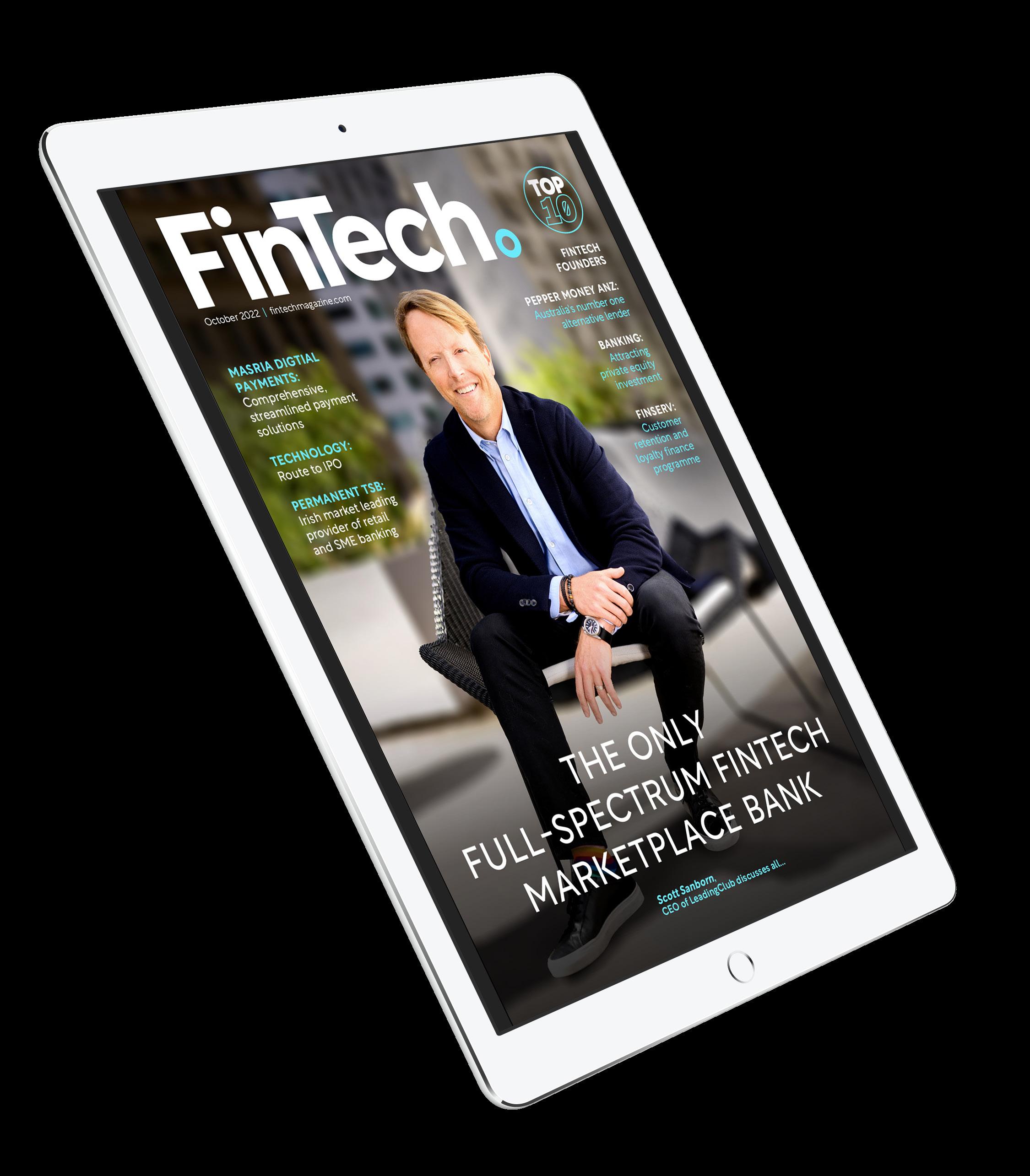


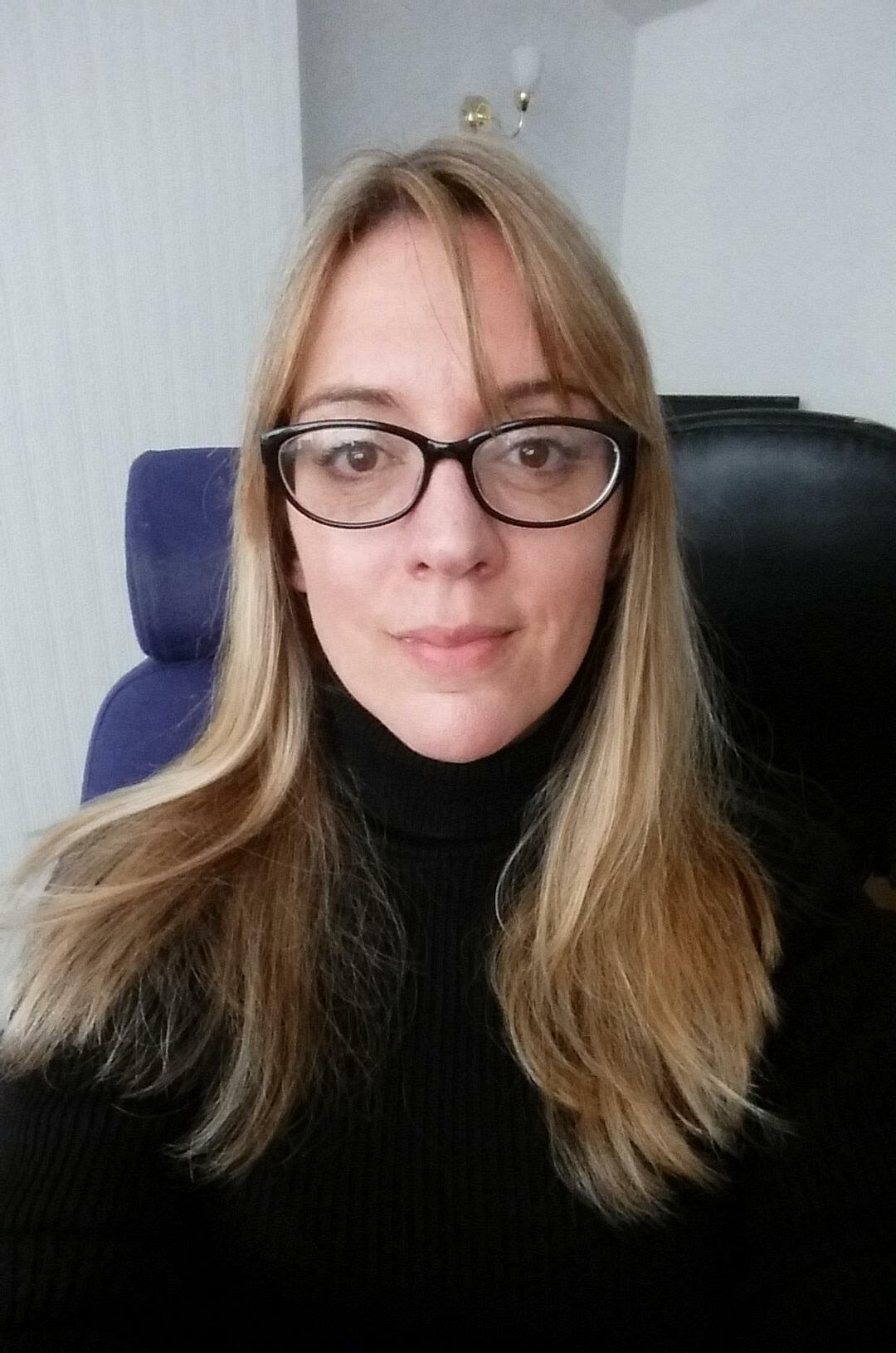
Recently, the crypto space was rocked by a brand new disruption that threatens to destabilise an already challenged space. Ethereum, the second largest cryptocurrency, did a ‘thing’.
That thing, called The Merge, saw the open source currency swap from its original ‘proof-of-work’ blockchain to the more sustainable ‘proof-of-stake’ blockchain.

The move was described by the team as being so complicated, that it was like swapping out the engine of a moving car. Even after years of research, they were not sure it would work - and even now, after a seemingly successful manoeuvre, the fallout is yet to be realised.
One thing is for sure though, by bypassing the mining process, Ethereum is now almost entirely net zero, having cut its energy consumption by the equivalent of Finland’s power grid.
Will this signal a new start for digital currencies? Will the SEC crack down on Ethereum now it is considered fair game? And how will other digital currencies react?
It’s an exciting time in fintech, despite all the unanswered questions. Check out our selection of digital currency features in this month’s issue to find out more. Let us know your thoughts, and of course, enjoy the issue.
“Ethereum is now almost entirely net zero, having cut its energy consumption by the equivalent of Finland’s power grid”
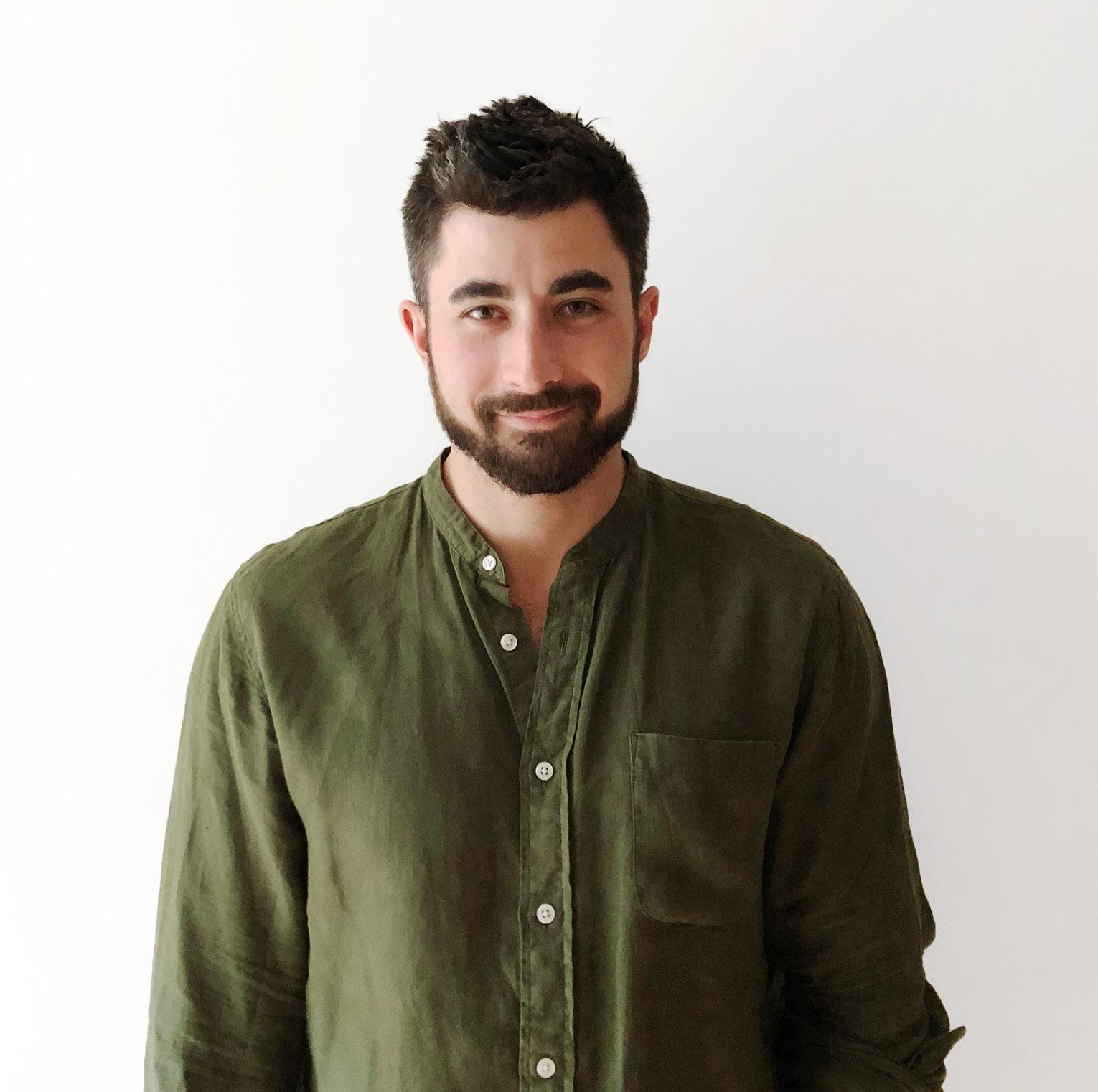










Digital disruption in financial services is already a reality for retail customers but it hadn’t happened yet for SMEs and entrepreneurs, who were still seeing their needs and demands pretty much uncovered. SMEs across the globe are seeking beyondbanking ecosystems, integrating third-party services, that cover their needs in a single, easy-to-use service, allowing them to focus on their core activities.

With this landscape in mind, STEP, a global marketplace for financial products for SMEs with the mission of delivering a fullyfledged Customer-Centric digital solution, used CRIF Group’s solutions, among which Strands’ BFM and Engager, enriched by CRIF account aggregation, in order to deliver excellence in every product/service to SME and corporate customers.
Structuring a customized insight driven experience tailored to SMEs, using CRIF’s open banking capabilities and Strands’ advanced analytics, STEP was able to create a competitive advantage in a very simple way, by enabling:
• Account aggregation – first platform to offer it for free to SMEs on European scale

• Invoice reconciliation - retrieve invoices from third party providers such as Quickbooks and many others
• Strands BFM + Engager - for cash flow management and forecasting; business insights to trigger relevant information for a personalized experience.

• Third party products - integrated that allow SMEs to apply for an instant loan, discount their invoices, manage their international payments and FX transactions, acquire payments from customers, ask for an ESG rating, subsidized finance, insurances among others
The solution provided by Strands and CRIF has enabled STEP to achieve unbelievable results since its market launch in October 2021 with more than 4,000 SMEs having chosen the STEP platform in two countries (Italy and Spain) in order to always keep their financial position under control and seek for an innovative fully-fledged financial solution. This customer loyalty has led to a 22,6% cross selling ratio and a pipeline of more than 450 million euros loan and working capital operations already requested.
CRIF is a global company specializing in credit & business information systems, analytics, outsourcing and processing services, as well as advanced digital solutions for business development and open banking.
CRIF is currently the leading credit information banking group in continental Europe and a major player in the global market for integrated business & commercial information and credit & marketing management services. Through continuous innovation, the use of state-of-the-art technology and a strong information management culture, CRIF supports 10,500 banks and financial institutions, more than 600 insurance companies, 82,000 business clients and 1,000,000 consumers in more than 50 countries of 4 continents. For more information: www.crif.com


A young man sends messages at the base of Jabal Alfil - a famous ancient landmark in Saudi Arabia. According to data reports, Saudi is ranking 10th globally for widespread 5G access, just slightly behind the UK, Germany and Italy. 5G is already transforming the transactional space, contributing to faster services, lower prices and better customer servicing. Rami Aboukhair, CEO of Santander Spain, says: “New technology will enable us to gain connectivity and response speed in transactions and offer our customers… the best possible experience.”

“THIS CONSTANT OVERLOAD OF UNREGULATED CRYPTO LEADS TO DAILY NEGATIVE HEADLINES ABOUT CRYPTOCURRENCY SCAMS, RESULTING IN INVESTORS BEING PUT OFF FROM BUYING AND SELLING CRYPTO”

Dan DA ROSA Co-Founder and CEO, ETHAX
READ MORE
Paul RANDALL CEO, Creditinfo
READ MORE
“FOR THE INDUSTRY TO CONTINUE TO GROW AND BECOME MAINSTREAM, CUSTOMERS MUST HAVE TRUST IN THE INFRASTRUCTURE AND FRAMEWORK UNDERPINNING IT AND IT STARTS WITH REGULATION”
Tom CROSLAND CEO, CoinZoom
READ MORE
With inflation at an all-time high and following several months that saw stocks plummet, along with valuations, it seems that there may yet be a glimmer of hope on the horizon for fintech companies seeking investment.
While the space won’t recover to 2021 levels - an artificially induced bubble that led to unprecedented funding due to the demands for digital transformation and online financial services - things do appear to be returning to where they were in 2020.
According to the latest reports on fintech startups, 2022 hasn’t been the disaster zone it could have been. There were more than 130 funding rounds in January alone and a further 26 fintech seed deals across Latin America in the second quarter of the year with Brazilian companies taking the biggest share with nine deals, or 35% all deals at that stage.
Indeed Neon raised $300mn in its Series D round, while Creditas closed a Series F round for $260mn. While these rounds are yet to reach the dizzying heights of 2021, they are in all other respects megarounds in their own right. 2023 may yet signal further optimism for the fintech market as economies begin to stablise.
Our results show that trust in the virtual world is still scant - with investors preferring to place their bets on real-world investment opportunities
We examine The Merge and how the event will affect the cryptocurrency market moving forward
As these two leading regional hubs forge new strategic alliances, we discuss what the future will hold for them
We caught up with Annelyse Fournier, COO of PDX Global, to find out what inspires her in fintech today

Ratio, a fintech that combines payments, predictive pricing, financing and a quote-to-cash process into one platform, has raised $411mn across venture funding and a credit facility
Power launched a full-stack credit card issuance platform and has raised $316.1mn after a $300mn credit facility and $16.1mn in seed funding
PayPal’s market capitalisation is currently sitting at $101.37bn, down from a peak of more than $360bn in July 2021
Block, the recently re-branded Square, owned by Jack Dorsey, posted a net loss of $208mn, or 36c a share
5G technology is revolutionising the financial services space through its super-fast, low latency and real-time delivery applications. The global rollout is well underway - we track the technology’s history
1G IS BORN Japan was the first country in the world to launch 1G wireless technology - an innovation that was to lead to connectivity so advanced that it would literally change the world
By the mid 80s, the Nippon Telegraph and telephone network had rolled out 1G countrywide. The world was taking notes, and the US had also launched its own 1G network using the Motorola DynaTAC mobile phone
-

Today, 5G is available across Europe, APAC, the US and beyond. In May 2022, an Ofcom report also estimated with “high to very high confidence” that 5G reached around half of all outdoor premises in the UK. The service promises to fundamentally transform data collection and delivery on a global scale
3G introduced the concept of wireless connections. Japan was the first country to sign up, with services available from October 2001. 3G users were introduced to the joys of location-based services, mobile TV, video conferencing and videos on demand
A decade on, 4G brought faster download and upload speeds, provided the innovation for video streaming platforms within the home and on the go (in anticipation, Netflix launched its first mobile responsive app in 2011)

South Korea, as the birthplace of Samsung, experimented with the very first 5G towers and receivers, rolling it out across its major towns and cities
Although the technology had been in the pipeline for some time, Google announced in 2016 that it was developing a 5G network called SkyBender. In December 2016, a 5G emulator was opened in Basingstoke, UK to enable local businesses to access 5G as an experimental pilot scheme
Estonian-born Kristo Käärmann is the dynamic CEO and Co-founder of Wise (formerly Transferwise) - a fintech that has completely disrupted the peer-to-peer money transfer space.
But despite heading up all the major industry leadership lists, this savvy businessman did not get a golden foothold in the industry as a result of his background.
Rather, he describes himself as a typical ‘Soviet kid’, who grew up under the shadow of the former Soviet Union’s draconian and backward-thinking business environment.
Describing that experience, he has told interviewers: “For the first 10 years, I was growing up like all the Soviet kids did at the time. It wasn’t until 1991 when the country became independent again that it went to a pretty incredible growth story from nothing to then becoming part of the European Union, joined NATO, and now, generally, is doing pretty well.”
But despite the lack of technology influencing those early years, Käärmann soon caught up, and in the early 90s, had his first taste of personal computing. His first computer was a ZX Spectrum, which then graduated to a Commodore 2001 - a 1970s model on which Käärmann wrote his first piece of code.
Once bitten by the technology bug, there was no turning back, and by the time Käärmann was 19, he’d launched his first business. It was an online investment tracking portal called Investor.ee.
Though Investor.ee was never profitable, it was nevertheless a popular product, and a few years later, Käärmann sold it for an undisclosed amount.
By now, technology and mathematics were what interested him most, and in 2002, be gained a BSc, followed by an MSc in Mathematics and Computer Science from Tartu University.
He then applied for a number of jobs - and was accepted by PwC, where his role was to assist banks in Estonia as well as
Kristo Käärmann is the Co-founder and CEO of Wise – a leading peer-to-peer international money transfer fintech based in London

Telcos to get a better grasp on their data. It was an eye opening experience because Estonia’s new commerce community was still in its infancy because just 15 years had passed since the birth of democracy and western-style commerce in the region.
Käärmann saw that legacy systems were not a problem to be dealt with, because Estonian companies were simply not old enough to have them. He said of the experience: “If you look at what consultants usually do in the old world, in Europe or in the US, they usually go to really old companies and help them deal with legacy and help them with change, either new processes or better ways to run the company. Back in the day in Estonia, all the companies were very young.” This experience saw him concentrate on innovation and organisation of data, rather than upgrades, deepening his interest in the space.
By 2007, Käärmann had joined Deloitte as a manager. It was here that he honed his skills in implementations and delivering systems, actuarial modelling, tools and data environments for customer finance, actuarial departments, and risk. He also supervised Deloitte’s technology strategy to support customers with management information and systems architecture challenges as a reaction to Solvency II regulatory requirements.
It was this experience that put Käärmann in the path of insurers and western banks. He realised their systems were archaic and gave poor value to customers. The epiphany saw him form a business partnership with Taavet Hinrikus, who was, at that time,
Skype’s director of strategy. The pair decided to create a new system geared towards cross-border money transfers.
TransferWise was launched in London in 2010 and swiftly established offices in Tallinn, New York and Singapore. The business took off - with much demand generated from migrant Estonians working in the UK and sending money back to their families abroad.
“If you look at what consultants usually do in the old world, in Europe or in the US, they usually go to really old companies and help them deal with legacy”
By 2017, the business had skyrocketed - and TransferWise launched a new service called the Borderless account, which opened up their services to freelancers and businesses, and essentially provided customers with a borderless account that could operate using multiple currencies - and still save customers substantial fees in comparison to offerings from traditional banks.
By 2021, TransferWise rebranded and became known simply as Wise. To date, the fintech has seen 12 investment funding rounds and has raised US$1.3bn in capital to develop and scale its operations. The company’s most recent valuation saw it hit US$11bn.
Käärmann continues to be a keen technologist in his spare time, and recently, during the pandemic, saw his 1,000-strong staff hold an open tech school in the Estonian language for children being homeschooled.

“For the first 10 years, I was growing up like all the Soviet kids did at the time”
The co-founder of brand consultancy Rival and ex-CMO at 11:FS talks inspiration, differentiation, and the grind of starting a business.

» It’s been a long and winding road. I fell into marketing; I never had an ambition to be a marketer and, in many ways, I still don’t! I originally worked in the nonprofit world with HIV/AIDS programmes in Latin America. New York City was my home at the time, and I ended up meeting the CEO of Forbes.com – back when it was a separate business from the magazine. He was looking for someone to “figure out this social media thing”, and I decided to give it a shot. It was the start of Web 2.0 in New York, and I met some of the people building the early days of social media, digital marketing and adtech, including a guy named Gary Vaynerchuk, who was starting an advertising agency. I worked in digital ad agencies for 10 years, then spent two-and-a-half years as the CMO of 11:FS until co-founding Rival late last year.
» Weirdly, I don’t think I had one. I had people I looked up to, of course, including my mom, but I wouldn’t say I had a hero. That’s not to say I had it all figured out (and I definitely still don’t) – it’s more that I take inspiration and motivation in smaller doses from many people rather than a big dose from one big hero.
» “Always try to bring 51% of the value”. This piece of advice is the one that’s had the most profound impact on almost every aspect of my life. ‘Bring 51%’ means that you are always trying to add more value than you’re receiving. If it’s a conversation, you’re trying to listen and respond in a helpful way. If it's a relationship, you’re trying to find ways to empathise and help someone out. If it’s a client or business opportunity, you are trying to understand their needs and try to help them solve them, whether you get the credit or not.
» Just how much opportunity there is. When I jumped into the deep-end of fintech by joining 11:FS three years ago, it blew my mind how many smart people were working on big ideas. Financial services are the lifeblood of our world in many ways, yet so much of it is outdated and broken. Even now, 20 years into fintech, we’re still just scratching the surface. There is so much of this industry where more value can be delivered faster and cheaper, which is what innovation is all about. For those of us on the inside, it might feel like the white space is filling up, but all you need to do is look around you at the inefficiencies that still exist and you realise how much opportunity there is.
» There’s no balance. Brands should be doing the minimum they think is needed to conform. The rest – the vast majority of time, budget and focus – should be put on doing something different. Of course, I’m exaggerating slightly to make a point. You can’t just design something completely foreign and expect people to accept it. Make sure you understand and are anchored in some kind of acceptable norm. But the biggest risk by far for most brands is not being rejected, but being ignored entirely. The market is so crowded. There is so much noise being pumped out at the modern consumer. Lack of differentiation is a much bigger risk to your business than being rejected for not conforming to design norms.
“
» Wise. As an expat, I’ve been a Wise user for years for FX between the US and UK, but we also use Wise as our business account at Rival.
» Grateful. Hungry. WIP.
» Starting Rival! I’ve always worked in startups, but this is the first that I’ve co-founded. And, man, it’s hard! I don’t think we talk enough about how hard entrepreneurship is – particularly being a founder or co-founder. We love to talk about the wins and headlines, but 99% of being an entrepreneur is about grinding, stressing, failing, learning – things that don’t get likes on Instagram and LinkedIn. We need to have a more balanced, honest conversation about it, because I believe a lot of people think they’re not good at what they do or they’re doing it wrong because all they see are people making it look easy. It’s not! And it’s a feature, not a bug, of trying to start your own company.

» I read a lot – about a book a week. The last book I read was A Gentleman in Moscow. My wife is trying to get me to read more fiction, so I promised I’d give it a shot. But the last ‘best book’ I read was The Changing World Order by Ray Dalio.
Accelerate growth and create wholistic business value with pioneering technology-fuelled digital solutions tailored to the realities of your enterprise and the financial services industry. Inspire customer loyalty and success.


Gautam Samanta, Coforge EVP and Global Head of Banking and Financial Services, stresses that digital transformation is all about delivering value.
Coforge is a global digital services and solutions provider, and helps its clients embrace emerging and new technologies to achieve real-world business impact.
The company’s proprietary platforms power critical business processes across a select number of sectors, and it has a presence in 21 countries, with 25 delivery centres across nine nations.
One of the sectors in which Coforge is a key player is banking and financial services (BFS), where it is helping its BFS clients on the digital transformation journey by making the road as straight and smooth as possible.
“Digital transformation is an evolutionary process, not a revolutionary one,” says Samanta. “So we do not see it as disruptive.”
He adds that having a clear vision of what digital transformation is - and isn’t - is what shapes the solutions that help Coforge’s clients achieve their goals.

“For us, digital transformation is not just a marketing phrase to wrap around software services. It is not about the technology.
It is about delivering business value for stakeholders, including shareholders, customers and employees.”
Samanta adds that Coforge’s approach is effective because its solutions also “absorb the realities of our customers’ enterprises” - the reality being that “the old and the new often coexist in business processes that can sometimes be decades old”.
“One of the things that differentiates us is that we are pragmatic in our approach to helping clients,” Samanta adds. “Yes, we transform with the new, but not at the expense of the old, which often has value.”
It helps, too, that Coforge has a deep understanding of what value looks like in BFS, because the company has chosen to focus its attention on this sector, as well as a small number of other verticals.
“We focus on very select industries, and have a deep understanding of the underlying processes of those industries, which provide us with a distinct perspective,” says Samanta.
Learn more ›
 PRODUCED BY: JOE PALLISER WRITTEN BY: GEORGE HOPKIN
PRODUCED BY: JOE PALLISER WRITTEN BY: GEORGE HOPKIN
Anew bank arrived in the Philippines this year. But don’t expect to see brick-andmortar branches appear on the streets of Manila, because the new brand, GoTyme Bank, has a unique approach for a new kind of consumer.
Instead of opening the doors of physical branches, GoTyme Bank’s launch was marked by the appearance of special digital kiosks that will be deployed throughout the retail ecosystem of the Gokongwei Group. From supermarkets, department stores and even convenience stores, this approach will help Filipinos make the move to mobile banking and financial services offered by the new venture.
A partnership between the Gokongwei Group and Singapore-based digital banking group Tyme – which operates across Asia and South Africa – GoTyme Bank is to be led by Nate Clarke, President and CEO, and one of the founding members of the Tyme Group.
Prior to joining the business in 2012 to start its first operations in South Africa, Clarke worked in senior management consulting roles with high-profile names including Deloitte.

Together, President and CEO Nate Clarke along with co-CEO and Chief Commercial Officer Albert Tinio explain how GoTyme Bank is bringing digital banking to the Philippines

LOCATION: PHILIPPINES
Nate Clarke is a founding member of Singapore-based digital banking group Tyme where he dedicated the last ten years to designing, building, and operating digital banks in emerging markets. Now, Nate is looking to make high quality banking accessible to all Filipinos as President and CEO of GoTyme Bank, a joint venture between the Gokongwei group and Tyme.
Nate’s experience spans general management, product, and strategy to include leading the rollout of Tyme’s digital proposition in Indonesia, growing the MTN Mobile Money in South Africa to a customer base of 4 million, and most recently heading product and strategy for Tyme in the creation of Africa’s fastest growing bank.
Before Tyme, Nate spent six years in Deloitte Consulting US’s Strategy & Operations practice where he fostered a passion for financial inclusion while on a project in Tanzania. Nate holds a BA in Political Science with a minor in Economics from James Madison University.
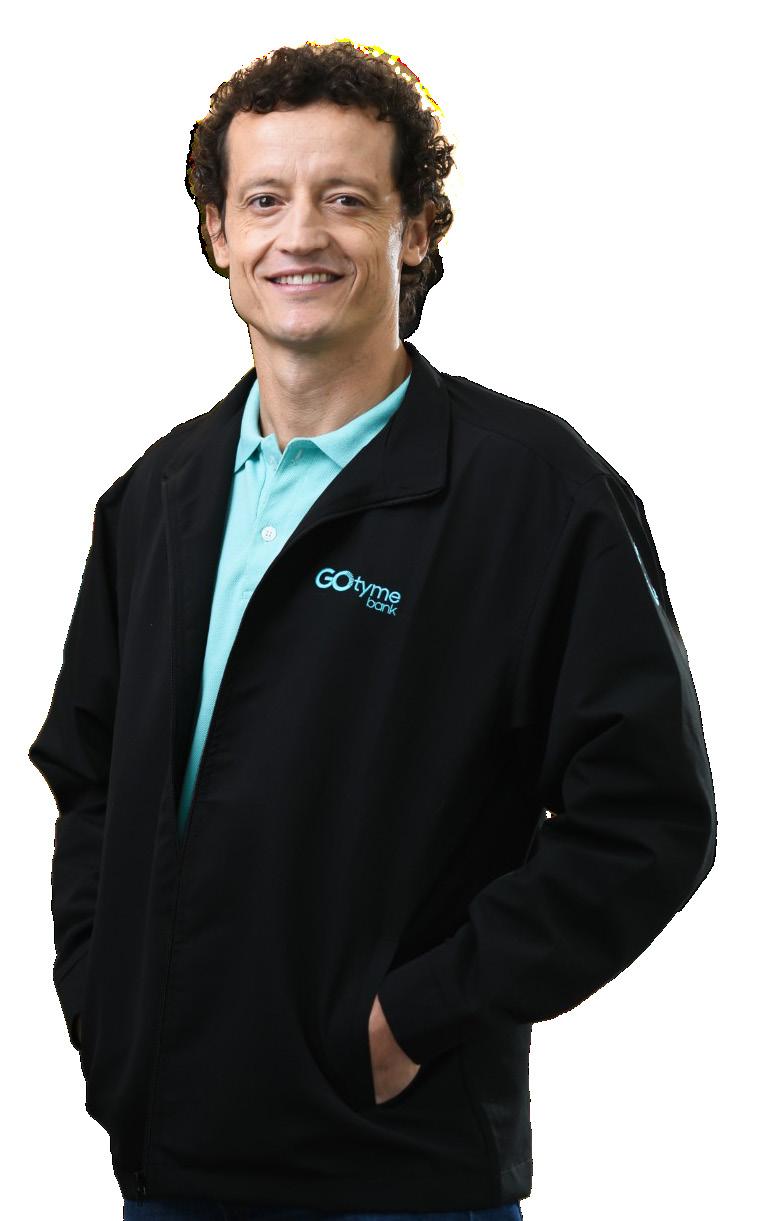
LOCATION: PHILIPPINES
Albert has several years' experience in the fields of fintech, banking, telecommunications, and logistics. He started his career in logistics having worked for American President Lines and Federal Express. He broadened his knowledge and experience by then moving into telecommunications with two major Philippine telco players, Globe Telecom and Smart Communications. While at Globe, Albert earned Globe’s Leadership Award for significant gains made in growing and expanding broadband services nationwide. He transitioned from telco to fintech after being chosen to lead GCash as President and CEO. During this period, Albert became the founding president of the Philippine E-Money Association.
Immediately prior to joining GoTyme, he was SVP, Digital Payments and Agency Banking for Robinsons Bank. Albert has a Bachelor of Science degree in Hotel and Restaurant Administration from the University of the Philippines and completed the Oxford FinTech Program of the University of Oxford Saïd Business School. He is also a certified coach from the International Coaching Federation.




Clarke says he was compelled to join the fintech industry when he found himself ready for new career and life challenges. “I was at a conference in Washington, DC, where I was based more than 10 years ago, and saw a presentation about a very successful digital wallet in Kenya,” says Clarke. “I heard about this phenomenon in East Africa where digital wallets and digital banking were transforming a country. And I said, ‘This is what I want to do with my life’.”
Before the pandemic, Filipinos had already become used to the convenience of conducting business and social tasks on mobile phones, explains Albert Tinio, co-CEO, and Chief Commercial Officer at GoTyme Bank, who also points out that Filipinos make up the largest percentage of Facebook users in 2022.
“ Our kiosks are capable of capturing personal data and identification documents, including biometrics, fingerprints, and other key data”
NATE CLARKE PRESIDENT AND CEO, GOTYME BANK AND CO-FOUNDER OF TYME GROUP, GOTYME BANK CORPORATION
“After they became comfortable with mobile phones, they started looking for things that are more practical, more every day and meaningful,” says Tinio. “And from there, they saw more financial services being offered. At the same time, banks and regulators in the Philippines now have a mandate to increase financial inclusion, so those two elements are driving the industry right now.”
When the new GoTyme Bank brand went live in October it immediately appealed to consumers with an awareness of, and appetite for, world-class banking products, according to Clarke. “This will start with payments and savings, but there will be a

move to investments and credit. The second phase that follows is actually more about serving all Filipinos, including those outside the cities.
“The main reason people are going to join the first phase is for the customer service and experience, as this is quite different from what we call the ‘traditional digital banks’,” says Clarke. “GoTyme Bank is a twist on digital banks, through a combination of a human and digital touch.”
The Gokongwei Group represents one of the largest and most diversified collections of
ALBERT TINIO CO-CEO, CO-FOUNDER AND CHIEF COMMERCIAL OFFICER, GOTYME BANK CORPORATION
“
It's very different recruiting people for something you're building from scratch, compared to recruiting for something that is already running”
Filipino companies. The group is composed of JG Summit Holdings Inc., which has business interests in food manufacturing, air transport, real estate and property development, banking, and petrochemicals; Robinsons Retail Holdings Inc.(RRHI), which includes supermarket, department store, and speciality retail brand operations; the Summit Media Group; and other privately held companies.
Working from headquarters in Singapore as well as offices in Hong Kong and Vietnam, Tyme designs, builds, and commercialises digital banks for the mass market, with particular expertise in serving underserved and underbanked populations.

The new GoTyme Bank venture combines the trusted Gokongwei Group brand, along with its reputation and multi-industry operations, with Tyme’s globally proven digital banking technology and hands-on experience to add an exciting new player to the Philippines’ banking community.
GoTyme Bank will leverage the Gokongwei Group’s extensive ecosystem, which is highly integrated into the daily lives of Filipinos – where they already shop, eat and spend family time. This distribution strategy will assist in the democratisation of financial services, addressing the needs of all Filipinos regardless of age, income, or geography.

The kiosks are to be deployed in Robinsons Retails’ network across the country. New customers will have the opportunity to meet with human bank ambassadors who will handle the entire onboarding process there and then.
“Our kiosks are capable of capturing personal data and identification documents, including biometrics, fingerprints, and other data,” explains Clarke. “It can then print and release a debit card there in the store – and this entire process happens in five minutes or less.”
Another example of the GoTyme Bank human touch includes the opportunity for customers to call, chat or email the company 24 hours a day, seven days a week. Customers can also benefit from the new digital bank’s unique rewards programme that turns ‘points into pesos’, which can instantly be credited to an account.
GoTyme Bank will provide secure and easy onboarding through both an app and digital kiosks that are conveniently located throughout the mall and retail footprint of the Gokongwei Group.
“In South Africa, 3 million of our 3.5 million customers joined TymeBank through our digital kiosks deployed in retail environments,” explains Clarke. “We believe the combination of this technology and the Gokongwei Group’s nationwide retail footprint provides GoTyme a clear path to rapid growth.”
As well as utilising the existing partner ecosystems of Gokongwei Group and Tyme, GoTyme Bank is creating its own ecosystem of partners and service providers.

“
We come from a wide range of industries, and I think that what brought us together is a genuine desire to build something – to build and leave a legacy”
NATE CLARKE PRESIDENT AND CEO, GOTYME BANK AND CO-FOUNDER OF TYME GROUP, GOTYME BANK CORPORATION
These include Daon, the Digital Identity Trust company that helps businesses mitigate fraud, reduce friction, ensure regulatory compliance, and deliver a seamless customer experience. Daon enables clients to easily and accurately proof, verify, authenticate and secure customer identities at every trust point across the entire customer lifecycle. With industry-leading biometric authentication technologies at its core, Daon’s technology ensures customer identities are accurately verified, easily asserted and safely recovered.
Also working with GoTyme Bank is GDS Link and WSO2, the former being a global leader in credit data and analytics, combining powerful artificial intelligence technology with credit and fraud risk management software and data. WSO2, meanwhile, provides GoTyme Bank with API management, integration, and customer identity and access management (CIAM) services playing a key role in enabling the bank to deliver its multichannel offering and seamless customer experience across those channels.
“As we grew from a startup, using WSO2 frameworks allowed us to focus more on building new customer experiences and less on integration and digital identity challenges. This is certainly something that could benefit many companies,” says GoTyme Bank CTO Chris Bennett.

WSO2 handles more than 60 trillion transactions and manages over a billion identities each year through its services, provided by over 900 employees worldwide working from offices in Australia, Brazil, Germany, India, Sri Lanka, the UAE, the UK, and the US.
“Both WSO2 and GoTyme Bank want our teams to focus on what they are best at,” says Bennett. “We share this in our cultures. Over time, we’ve moved to use more of WSO2’s managed services so we can each concentrate on our best work for clients.”
People powering the process of financial inclusion in the Philippines GoTyme Bank will employ 362 bank ambassadors at 226 kiosk locations by year-end. Both Clarke and Tinio say that the eclectic mix of professionals will play a crucial role in bringing new financial services to an increasingly sophisticated customer base in the Philippines.
“We come from a wide range of industries, and I think what brought us together is a genuine desire to build something – to build and leave a legacy,” says Tinio. “We come from banking, and there are also fintech people, there are FMCG people, there are telco people, there are logistics people, and all of these people are freely, organically sharing their experience and contributing to building a new service.”
Clarke agrees with this, emphasising that the new team is having fun working on the
venture – and this has a lot to do with the approach taken to recruit the new team.
“We were quite deliberate regarding recruitment,” says Clarke. “Because it's very different recruiting people for something you're building from scratch compared to recruiting for something that is already running.
“We wanted to build a diverse group, as Abet has said, but on top of that, we wanted to attract people with a few scars and some unfinished business,” explains Clarke with a smile. “We’re looking for people who have had success in our careers, but who have also had some near big misses where we felt

like we didn't quite make it, but know now that we can do it better.”
This approach has led to a shared belief within the new team, emerging from the combination of rock-solid experience and “scar tissue” from previous projects.
“We want people who are used to being in the trenches, doing the hands-on work, but we believe that personal growth and stretching yourself is good for the culture and good for motivation,” says Clarke.
“ The main reason people are going to join the first phase is the customer service, which is quite different from traditional digital banks”
ALBERT TINIO CO-CEO, CO-FOUNDER AND CHIEF COMMERCIAL OFFICER, GOTYME BANK CORPORATION
The world of cryptocurrency seems more volatile than ever before. But what new trends are emerging from the fray?
WRITTEN BY: JOANNA ENGLANDCrypto investing was once the forte of experimental risk-takers seeking a wild west approach to fortune hunting. As the space evolved, it has garnered increasing interest from established investors and incumbents. Though a lack of regulation within the industry is still a factor in preventing its complete transition to the mainstream, progress is being made.
The process has been hampered by several crypto winters over the past few months that have seen the value of investments crash and armchair investors wringing their hands. But now is not the time to turn our backs on the heady crypto space, as new developments and trends look set to stabilise and energise digital currencies.
Today, more hobby investors than ever before are dipping their toes into the crypto space through well-established crypto exchanges that offer advice and navigation through the tricky DeFi landscape.
Data shows there are as many as 20,268 digital currencies in existence, though currently, less than 500 of them are considered tradeable via an exchange. Crypto exchanges only trade certain types of crypto, but the spectrum is widening, which opens up a more diverse market for investors.
Sunrise strives to provide innovative solutions that empower financial wellness and advance financial equity. We partner with mission-minded fintechs that want to create positive change.
The biggest names in crypto exchange usually provide the most choice. For example, Kraken and Coinbase are known for their wide spectrum of coin trades, with Coinbase currently trading over 450 different cryptocurrencies, while Kraken will trade 160. Robinhood, meanwhile, focuses on the few, prominent currencies, but does offer commission-free trading on some coins.
According to Tom Crosland, CEO of CoinZoom – the crypto-to-cash conversion fintech – regulation will be the mainstream driving force. “Some in the crypto space virulently oppose regulation, arguing that it would hinder innovation and contradict the very decentralised foundations upon which cryptocurrencies were built. In this scenario, financial task-forces would take a hands-off approach, leaving the industry to self-regulate.”
Crosland argues that the implementation of a clear and well-developed set of
regulations will be critical for integrating cryptocurrencies into the global financial system. “For the industry to continue to grow and become mainstream, customers must have trust in the infrastructure and framework underpinning it – and it starts with regulation.”
He points out that trust cannot be founded in an environment that “permits bad actors to roam freely”. Indeed, the UK’s Financial Conduct Authority (FCA) recently reported a 100% increase in alleged crypto-related scams in 2021 compared to 2020. The cost of cryptocurrency fraud also amounts to US$19.2bn worldwide.
Such eye-opening data, he believes, is a clear driver for change. “Clear accounting rules are critical to achieving this, not only helping companies shape their crypto strategies, but also providing them with the tools they need to make crypto a safe and orderly marketplace for investors.”
More and more insurance providers are recognising the need to provide protection options when it comes to digital assets.
Breach Insurance is an insurtech startup that provides insurance technology and
regulated insurance products for the crypto market. The company’s Crypto Shield product is available for more than 20 cryptocurrencies and for consumers using Binance US, Coinbase, CoinList, and Gemini. It is also backed by a premier insurance carrier and reinsured by a global crypto insurance industry leader.
Co-founder Eyhab Aejaz explains: “We don't opine on whether crypto is a security, a currency, something more like gold, or whether it's property. Our position is that it's a thing that people choose to buy and own. It's not illegal because governments tax you on it. Last time I checked, they don't tax you on drugs or something more illicit. So, it's undefined, but it's something that people have an appreciation for – so much so that they choose to put part of their wealth into it.”
There are still lots of countries globally that don’t tolerate the use of cryptocurrency. But this is slowly changing. For example, according to the Thomson Reuters Cryptos Report Compendium of 2022 , crypto is now far more widely
accepted globally than it once was. Only a smattering of nations remain closed to it. For example, the Bolivian government banned cryptocurrencies in 2014, believing it would instigate economic instability and tax evasion. “It is illegal to use any kind of currency that is not issued and controlled by a government or an authorised entity,” Bolivia’s central bank (BCB) said.
MANISH PATNI LEAD PRODUCT MANAGER EUROPE, FINACLE
But El Salvador adopted Bitcoin as legal tender in 2021, Brazil has embraced the digital currency market in response to fiat currency instability, and, in December 2022, a new cryptocurrency law was introduced in Peru, which will define crypto assets and regulate crypto transactions. Called the ‘Cryptoasset Marketing Framework’, the law is, according to the report, “seen as a first step to establish regulatory clarity for virtual asset service providers and others involved in blockchain and cryptography”.
The metaverse is the perfect home for crypto Meanwhile, in the Western Hemisphere, digital currency is here to stay and is forging new innovations in gamification, online retail and through opportunities in the metaverse.
As Manish Patni, Lead Product Manager of Europe for Finacle, points out: “A recent report by JP Morgan has estimated the market and business opportunities for companies in the metaverse at over US$1tn in annual revenues, while the Zion Market Research study claimed that the metaverse market is expected to grow at 39.5% CAGR to touch $400.5bn by 2028.”
He says that digital platforms and tech giants are preparing for the metaverse, which it is predicted will have an economy worth $13tn and five billion users by 2030.
With so much transition taking place, cryptocurrency adoption globally will continue to increase. “Banks and fintechs have the potential to lead, as the world has shifted to digital interactions and the adoption of digital fintech solutions due to the pandemic and subsequent lockdowns. The trend is likely to continue in the metaverse, where fintechs will drive most financial transactions.”
TOM CROSLAND CEO, COINZOOM PRODUCED BY: MICHAEL BANYARD WRITTEN BY: ALEX CLERE
PRODUCED BY: MICHAEL BANYARD WRITTEN BY: ALEX CLERE

When Mark Foulsham joined Kensington Mortgages nearly three-and-a-half years ago, it wasn’t just a new employer – it was a completely new industry. Although he has nearly 20 years of experience in financial services, he had not worked directly in the mortgage sector before, but says the appeal was there from the very beginning. “As an outsider, I thought it was a great opportunity to come in and work with an organisation that was pioneering innovation in the industry,” he recalls.
Foulsham has a superb track record of over 25 years of driving digital transformation within senior operations, IT and project delivery roles primarily within financial services. He spent 12 years as CIO at insurance provider Esure Group, including Gocompare, where his remit was broadly similar to his current position, and enjoyed a nearly three-year tenure as Chief Digital Officer for the disability charity Scope. In parallel with that role, he also worked with fintechs on their digital transformation journeys. The cross-fertilisation between sectors provides valuable opportunities for challenge and innovation, he says.
“I've worked across a broad range of industries and that's intentional,” he explains. “I think a variety in your career adds a lot of value for comparing opportunities and looking at how things are done differently.

At the heart of Kensington Mortgages' digital transformation strategy is the customer – in particular, understanding their unique circumstances and needs
“Sometimes automation is seen as a panacea. We see it as one of a number of solutions, not a silver bullet”
MARK FOULSHAM CHIEF OPERATING OFFICER, KENSINGTON MORTGAGES
 Example of an image caption
Example of an image caption
So, my background is quite varied – but deliberately so.”
At Kensington Mortgages, he oversees a full spectrum of operational, digital, data and technology-related functions that make up about two-thirds of the organisation’s headcount and budget. It’s a sizeable undertaking that also includes partnerships and business change – but a role that actually didn’t exist until Foulsham took it up in June 2019. He wasn’t the only new face in the business, either. When Foulsham joined, Chief Executive Mark Arnold was little more than a year into the job. Together with the wider executive team, they have “turbocharged” Kensington’s strategy, reinforcing its position as the UK’s leading specialist provider of mortgages that operates where big-bank lenders struggle to reach.
“The company has been going for 27 years but we’ve changed quite a
lot over that period,” Foulsham says. “We are essentially providing mortgages for people who don't necessarily have the right fit of products provided to them by high-street lenders.
“We are actively pioneering in our approach within an industry that continues to be ripe for transformation and disruption; society and customers’ needs continue to evolve to demand more tailored solutions and we are constantly adapting to meet this growing demand. We've led a number of firsttime initiatives, including a real focus on ESG – Kensington were the first to complete a green bond securitisation in the UK mortgage market, for instance.
At the heart of Kensington’s strategy of specialism is tailoring

products to their customers’ individual circumstances. The company prides itself on offering mortgages for those on variable incomes, like sole traders or the selfemployed, who have specific lending needs. In particular, it offers a ‘Flexi Fixed For Term mortgage’ that provides certainty of rates to customers in an increasing interest rate environment.
Kensington understands that mortgages are not the sort of product that fit everybody equally. Instead of a one-size-fits-all approach, it invests a great deal of time, analysis and engagement to understand its customers. It’s something that requires empathy – but thankfully, Foulsham can rely on his three adult children, who are of an age to be taking their first steps onto the property ladder. “They provide a great source for challenging my thinking about a generation that’s our future customer base,” he says.
“The large banks are not as nuanced when it comes to connecting the needs of customers with the services and products that they provide,” Foulsham continues. “At Kensington, we have a ‘head-and-heart lending’ mentality, where we use data to provide insight and information but we still make sure that customers’ payment arrangements are at the right level of affordability, or that the right products are tailored for customers. It’s
LOCATION: UNITED KINGDOM

Mark has more than 30 years’ experience in driving transformative change and digital innovation within various sectors, most recently Financial Services. He has primarily worked with Fintechs, start-ups and digitally led organisations, in particular those aiming to pioneer market-leading initiatives. He joined Kensington in 2019 taking on the role of Chief Operation Officer, responsible for Lending Operations, Servicing, Technology, Change and Procurement. His prior roles have included leading similar functions for esure, GoCompare, Macquarie Bank and Bouygues. Mark sits on advisory Boards for Winmark and CIONET, has authored books on data protection and has been a Non-Executive Director for cloud-solutions business, Cobweb.
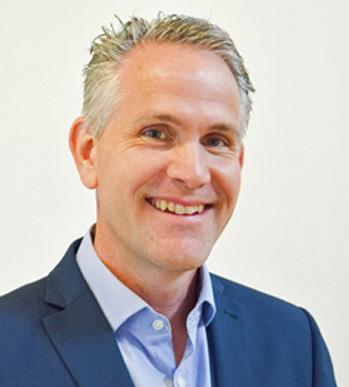

not just about whether the computer says yes or no. It's about really understanding the background and the circumstances of those customers.
“I think if you overplay technology and digital too much in your strategy, you can end up being perceived as a faceless organisation. By combining both tech and the human touch, we try to be highly informed, apply strong diligence and deliver market-leading customer service and solutions. You can only
do that by having a real blend of expertise in an organisation. Over the last three years, we've grown significantly year on year. Clearly within that time, we've also had the pandemic to navigate. Despite the challenges COVID19 brought, it really allowed us to focus on customers’ needs (such as managing payment holidays) and how our colleagues work (replatforming our infrastructure) – and very much acted as a catalyst to what we were doing.
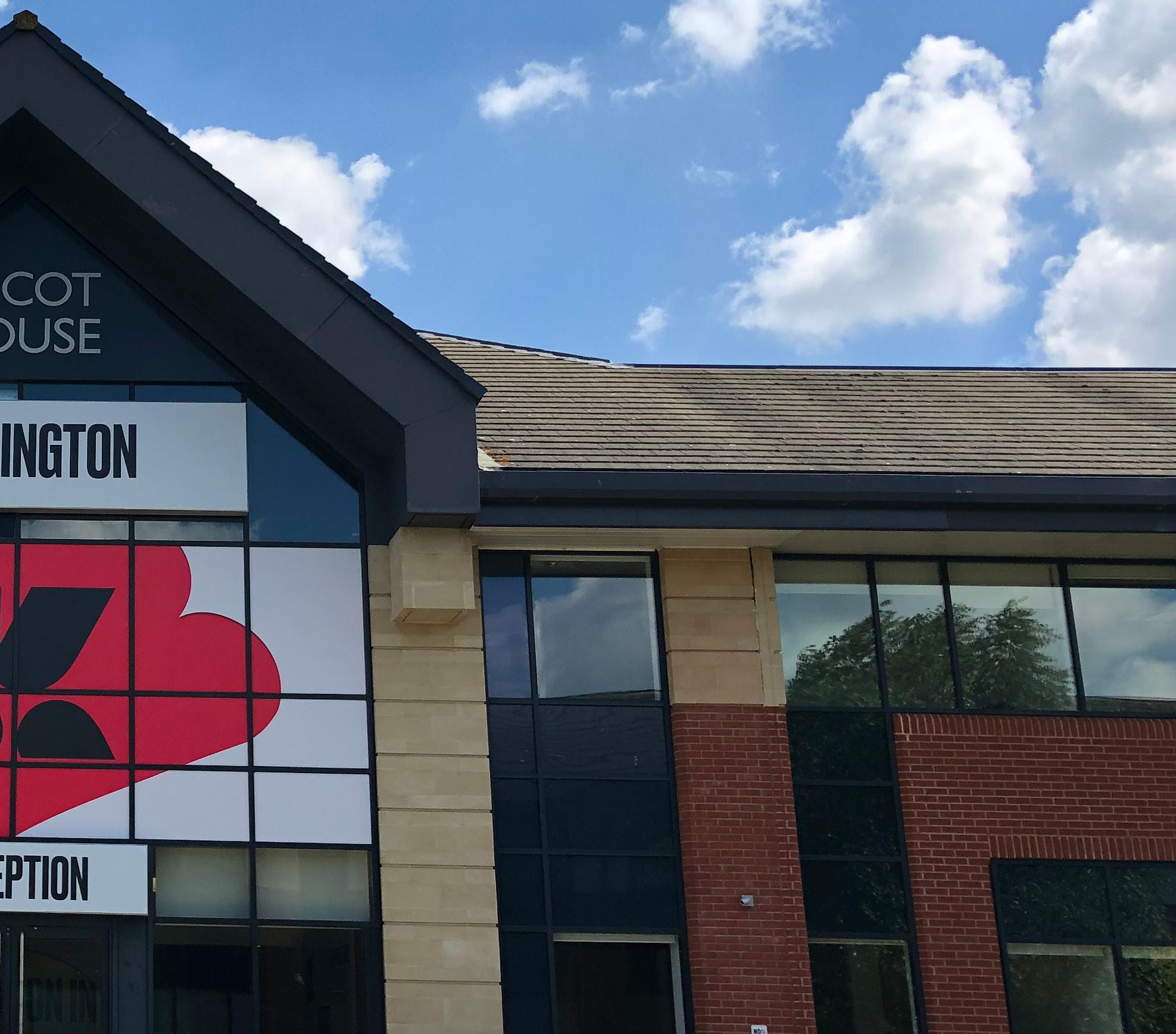
“We essentially provide mortgages for people who don't necessarily have the right fit of products provided to them by high-street lenders”
MARK FOULSHAM CHIEF OPERATING OFFICER, KENSINGTON MORTGAGES

Many businesses and organisations are going through a period of digital transforma tion. Supporting such initiatives is Sopra Banking Software (SBS), which is working with Kensington Mortgages (KMC) to digitally overhaul its services.

“SBS is a global software and services or ganisation,” explains Richard Broadbent, Managing Director.
“We cover everything from origination pro ducts to the operation and maintenance of those, as well as savings, lending and transactional banking. From a customer perspective, we again support a very bro ad range of organisations, including high -street banks, specialist lenders, and buil ding societies.”
SBS’s rich variety of solutions mean it’s able to support organisations throughout the journey of onboarding customers to the closure of accounts or collection of funds.
“KMC specialise in certain segments of the mortgage market in the UK; the software and services that we provide effectively un derpin their business operations right the way through the full engagement cycle that they have with their customers.
When SBS started working in partnership with KMC, the process followed two core strands: digital product innovation and customer experience. “On the digital side, we’ve helped KMC automate the origina

tion of mortgage products, as well as fo cusing quite heavily with them on how to integrate other third parties into that origi nation process.
“We’ve also spent quite a lot of time working with them around the optimisation of the broker journey, making sure that the service is fine-tuned to meet the very spe cific needs of the brokers that are helping originate mortgages on customers’ behalf,” Broadbent says.
In terms of core banking, SBS has also supported much of KMC’s innovation around the new products it has launched in the mortgage market. One that KMC has focused quite heavily on is its green mortgage – essential in a more socially and environmentally-aware age – which brings together financial services and so cial responsibility under a single product type.
“It’s a really exciting time for Kensing ton Mortgages at the moment, and we’re looking forward to the continuation of our partnership optimisation programme, su pporting KMC with its aspirational growth.”
 MARK FOULSHAM CHIEF OPERATING OFFICER, KENSINGTON MORTGAGES
MARK FOULSHAM CHIEF OPERATING OFFICER, KENSINGTON MORTGAGES

“We are actively pioneering in our approach within an industry that continues to be ripe for transformation and disruption”
“We put a number of digital solutions in place during the pandemic that we've now continued to use, grown and scaled – but also ways of working as well, whether that comes down to automating some of our activities, greater sophistication around affordability checks or providing a new portal for customers. These are things that not only helped address the specific demands brought by the pandemic, but have now been extended to provide benefits to our customers, brokers and colleagues as we continue to develop further and grow.”
This human touch has built a tangible rapport between Kensington, its broker community and its customers. It will prove enduringly vital as the world faces up to some of its gravest economic realities: consumers are facing a cost-of-living crisis and many homeowners will struggle to pay for everything during the next few months. Foulsham points out that Kensington is well-placed and has proven adaptable in helping them respond to these looming cost pressures.
“People want to have the right service and the right product provided to them,


but they also need flexibility and optionality as well. One of the things that we've done is put in a solution that allows customers at the end of their fixed term to choose another product. And we've created that in a digital form, so that when customers move off their fixed rate, we've got clarity on how that can happen and how that can be achieved in the most affordable way for their circumstances.”
Of course, accepting customers that other lenders turn away means a careful understanding of risk is needed – something which Kensington mitigates by utilising the data and technology it has to hand. “Risk is our business,” Foulsham explains wryly. “That's what we manage. Obviously it's the
same for high-street lenders. What I would say is, rather than taking a fairly heavyhanded approach, we take a more precise and tailored approach. It's our job to really understand risk, both for our customers and how we underwrite.

“We have a model called VECTOR, which contains mortgage loan level performance data over a period of 30 years and includes 32 million data points through several macroeconomic cycles. The wealth of data allows us to deploy a broad variety of model uses. That ranges from assessing our underwriting accuracy to the effectiveness of pricing for new products.
“Individually, we look at customer circumstances, and I think it's a different type of risk management and risk assessment when customers come to us rather than larger high-street lenders. Because we have the data and the human touch, we can blend those into a better understanding of what risk means to the customer in terms of payment plans, for example, but also risk to us in terms of making sure the loan period is appropriate. In many respects, being more tailored and more personalised in our product set allows us to have greater insight not only into the customer's needs, but also the risks around that.”
Providing a tailored approach also has the potential to create extra work across all areas of business activity. Like many lenders, Kensington has turned to automation to help ease the pain points that this would usually create – but Mark Foulsham is keen to stress

that automation needs to be targeted, rather than being a cure-all that can be thrown at any problem.
“I think sometimes automation is seen as a panacea,” he says. “We see it as one of a number of solutions, not a silver bullet.”
“The first question when one deals with automation is ‘are we automating something that is inefficient that needs fixing first?’ So, is the process correct? Is it optimised? Is it effective in terms of providing the right information to customers or the right information back into the organisation? Only when we feel that the process and procedures are correct do we look to automate it to make it slicker. Particularly in areas where there’s no value-add, where you're passing information from one place to another, or when there’s a procedure that you can improve timeliness or accuracy… that's when we look to put in automation.
When you have a mortgage book that’s worth £5bn, as Kensington does, it becomes much more complex for a lender to achieve complexity at scale. New technology and new platforms become mammoth undertakings. Part of the reason that incumbent banks and lenders struggle so much with legacy technology is that, as an organisation scales, it becomes much easier for those at the top of the hierarchy to dismiss large digital transformation projects as too costly, too complex, too time-consuming and too risky.
But, of course, the success that you derive from digital transformation projects relies on the approach you take from the outset, and the partners with whom you choose to align yourself.
“I've always been very keen that you don't continue to just bolt on new things after new,”
MARK FOULSHAM CHIEF OPERATING OFFICER, KENSINGTON MORTGAGESFoulsham says. “That way, you're just building up technical debt and building up complexity.
“I'm a big believer in reusing your previous investments as well as modularisation of solutions and technology. So, trying to make sure that platforms and systems are coupled in a way that are effective in terms of data transfer and functional cohesion, but aren't too tightly bound in a monolithic sense. That means that every time you make a change, it has a ripple effect and takes a long time to deploy. I think, when we look at scalability and complexity, it comes down to making sure the solutions are as elegant as possible, as simple as possible and no more complicated than they have to be. The market is changing so quickly that if you over-engineer something, you'll find that by the time you've deployed it, the solution isn't actually fit for purpose in the way it was originally.”
Kensington has turned to Paris-based Sopra as its long-time primary technology partner. In recent times, Sopra has deployed a new frontend platform that has allowed Kensington to realise better and more agile working. For example, before that platform came in, it would
“Being more tailored and more personalised in our product set allows us to have greater insight into the customer's needs and the risks around that”
take many days if not weeks for the lender to effect a pricing change – but Kensington can now do that in minutes or hours.

“We have a very strong relationship with Sopra,” Foulsham says. “We share business strategies, we have good engagement at an executive level, and we deal with making sure that there's a good alignment between their product evolution and our business strategy. So, if we are looking to go into new segments or we're looking to release a new product, the functionality behind that and the way in which their product is going to operate is very much a conversation we have at an early stage with Sopra, so if appropriate they can build that into their core platform.
“In particular, one of the big differences from a few years ago when we were introducing these new platforms is the level of
configuration. We are able to configure over 90% of some of the changes that we've put into place, where some of our competitors using other systems have nowhere near that sort of flexibility. Again, it gives us a real advantage in the market using this type of system, a more contemporary system than others. In a dynamic market that requires a quick response to changing circumstances, such as rapidly rising interest rates, having slick and adaptable technology is a real competitive differentiator.”
It’s this steadfast determination to keep pace with change and move with their customers that underlines much of Kensington’s thinking. Data and technology have taken on renewed

importance, allowing the company to tailor products to customers’ individual needs and rapidly transform its technology stack.
“We know that customer circumstances are going to continue to change over the next 12-18 months,” Foulsham says, looking ahead to the next couple of years. “In particular, when it comes to the cost of living, we know that customers are going to want flexibility in the products and services that we provide, so it's really important that we continue to understand what those needs are and be dynamic in the choices we offer.
“As an organisation, it's really important that we continue to look at the changing picture when it comes to our customers’ needs and how we can make sure, as an organisation, we adapt to that evolving position and ultimately provide customers with the value and service that they demand.”

“Large banks are not as nuanced when it comes to connecting the needs of customers with the products they provide”
MARK FOULSHAM CHIEF OPERATING OFFICER, KENSINGTON MORTGAGES

The launch of new cryptocurrencies has created a fractious and, arguably, oversaturated marketplace for investors –more than 20,000 different tokens are currently in existence. With each new cryptocurrency, calls for the industry to face greater regulation are amplified. What’s more, with the global economic outlook looking bleaker by the day, how will new cryptocurrencies stand out and thrive?
“The market is leaning towards becoming crowded and now presents somewhat of an impossible task for investors to distinguish which cryptocurrencies are the ones to be trusted and where best to invest their money,” says Dan Da Rosa, Co-Founder and CEO of recently released cryptocurrency token ETHAX. “This constant overload of unregulated crypto leads to daily negative headlines about cryptocurrency scams, resulting in investors being put off from buying and selling crypto. Albeit small, this contributes towards the crypto market's unpredictable behaviour.

Learn what open source vulnerabilities are commonly found in financial services organizations.

“It is important that the entire community is aware enough to steer clear of adopting the stereotype that all cryptocurrencies are untrustworthy scams, as it would damage the reputation of tokens and coins that are actually legitimately safe.”
How can crypto tokens stand out in a crowded market?
ETHAX was launched in May 2022, intended to lower access barriers into cryptocurrency and make the process of investing safer and easier. With so many rival tokens on the market, Da Rosa says that new cryptocurrencies “should always aim to stand out but not at the risk of compromising your mission”. He explains that ETHAX’s differentiation is partly built on its design, brand message and its entire proposition –including introducing safety, loyalty and trust into the crypto market.
“In short, it’s very difficult to secure buy-in, particularly if you have no track record,” Da Rosa says. “Being an unknown in the cryptocurrency market presents difficulties with general market adoption.
DAN DA ROSA CEO AND CO-FOUNDER, ETHAX“You can use classic marketing methods to grow awareness, and we’re seeing a lot of cryptocurrencies leaning on digital innovation and social media growth to expand their market share. But you walk a fine line by anchoring yourself early on to a message that doesn’t represent you and can ultimately ruin your reputation.”
On top of the challenge of standing out against other currencies, new entrants also have to wrestle with a general lack of understanding from everyday investors. According to a recent survey from Cardify, one in three crypto investors say they
BEN REEVE PARTNER, OLIVER WYMAN“We would like to see a complete shift in the cryptocurrency industry that encourages companies to be licensed and self-regulated”
“Crypto illiteracy poses a challenge for on-chain growth as investors have become wary of more advanced functionalities such as staking”BEN REEVE PARTNER, OLIVER WYMAN
have little or no understanding of what they’re investing in.
Ben Reeve, a partner in Oliver Wyman’s Global Financial Services practice, says: “Emerging cryptocurrencies enhance the risk of information asymmetries across the ecosystem, which is driven by opaque and concentrated ownership structures, varying scope and quality of investor materials, and complex multi-platform market structures. Uninformed investors may lock capital into protocols that observe complex yet flawed mechanics for vesting, lockups, and overall security.
“Crypto illiteracy poses a challenge for on-chain growth as investors have become wary of more advanced functionalities such as staking, which is indicative of the depletion from DeFi totally value locked, falling from US$173bn to US$60bn since January.”
With global macroeconomic challenges, further questions will be asked about crypto’s future – particularly new and emerging
tokens.
After a slump in the crypto market, inflation has hit double figures in some countries, while economic growth in advanced economies like the US and the Eurozone is projected to slow to just 1.4% next year.
“Many people are rightfully looking inward for ways to save money and alleviate pressures, finding little comfort in a volatile market,” Dan Da Rosa says. “Naturally, fewer people are finding a reason to trust emerging currencies that they may never have heard of or know what the outcome will be. It’s a challenge, as we want to do what we can to educate people on what investing in cryptocurrency could mean for their investments on a long-term basis. But, for some, it’s just not a priority right now.
“On the flip side, for regular investors who have experience with volatile markets and the value of investing, they may be more inclined to choose a cryptocurrency that has an established overview of trends, dips and peaks to evaluate.”
“The explosive growth of cryptocurrencies has led to nations urging their financial regulators to introduce frameworks for digital assets, but approaches have varied significantly”
Oliver Wyman’s Ben Reeve believes that regulation will be the largest near-term driver for development in the digital asset landscape, but argues that the current crypto winter is unlike others that have happened before.
“Different from past crypto winters, there’s a significant amount of infrastructure that’s been built and many crypto natives have accumulated healthy funds to last through the winter and continue innovating. While there might still be a slowdown, this could also be an opportunity for traditional finance players to catch up.”
Dan Da Rosa believes the unregulated state of crypto could potentially undermine investor confidence, with just 0.01% of currency projects currently licensed and regulated. “The more unregulated cryptocurrencies that enter the crypto space, the more likely it is that we will see potential investors invest elsewhere and the market will become a more volatile space.”
He takes pride in the fact that ETHAX is among the minority of cryptocurrencies that are licensed and regulated for the services they provide, but would like to see more being done to crack down on the remaining majority. “We reduce the risk and ensure that we provide a safe platform for investors to learn on and develop their investing and cryptocurrency trading skills,” he says.
“We would like to see a complete shift in the cryptocurrency industry that encourages companies to be licensed and self-regulate. The crypto industry needs to unite on regulation, however, that proves a difficult task when so many cryptocurrencies are free to flood the industry with no or very low regulation standards.”
This is a sentiment echoed by Ben Reeve, who points to the disparate nature of regulation around the world: “The explosive growth of cryptocurrencies has led to nations urging their financial regulators to introduce frameworks for digital assets, but approaches have varied significantly on a global level, from some economies that embrace crypto technologies – such as Switzerland, Singapore and Hong Kong – to others with outright bans on crypto trading and mining activity.”
“The market presents somewhat of an impossible task for investors to distinguish which cryptocurrencies are the ones to be trusted”
DAN DA ROSA CEO AND CO-FOUNDER, ETHAX



When Dean Leavitt talks to us from his base in New York, it’s a characteristically warm and humid summer day in the city. His expansive corner office affords a view right down East 48th Street in Midtown Manhattan. These sunlit streets are lined by some of the largest and most prestigious companies in the world, with more than one in 10 S&P 500 firms based in New York and a city-wide economy that tops US$1.5tn in GDP every year.
These are the companies that Boost Payment Solutions, which Leavitt founded in 2009, are targeting: large, complex organisations wherever they are located in the world. Boost is active in 47 different regions globally and has been focused since day one on enterprise-level B2B spending, building financial tools that help companies to bridge the gap between accounts receivable (AR) and accounts payable (AP).
Leavitt, who himself is a veteran of the finance industry, started a company in 1989 that was focused on the consumer card acceptance industry before running a public company, also in the credit card processing space. He then founded Boost 13 years ago after seeing many failed attempts, by companies big and small, at pursuing B2B payments.
For the first five or six years, they were, by his own admission, an exclusively serviceled operation that drew upon third-party technology to help clients. It wasn’t until

With its bespoke approach, Boost Payment Solutions is helping large enterprises bridge the gap between accounts receivable (AR) and accounts payable (AP)

six or seven years ago that Boost Payment Solutions began to hear from customers who had specific requirements, and so Boost brought on board developers to help build bespoke software solutions internally. Today, the fintech is laser-focused on creating custom solutions that enable large enterprises to overcome whatever challenges they may face within B2B payments – and that can vary wildly from one client to the next.

Bespoke solutions tailored to each client “Historically, the credit card processing industry has been bifurcated into two worlds,” Leavitt explains. “Those that support the accounts payable side, and those that support the accounts receivable side. Even if they're under a single roof, there's anywhere between a brook and an ocean between the two. It was very important when we started Boost to serve as that bridge and uniquely join those two groups together.”
Much like the Queensboro Bridge, a stone’s throw from Boost’s offices, the traffic that traverses that bridge is diverse. Although Boost focuses on enterprises, there are still variations in terms of industry and geography. “Our buyers tend to be very large organisations,” Leavitt continues. “We have more than 50% of the Fortune 100 that either make payments through us or receive payments from us. So the entities that we work with tend to be very large.
Bridging the gap between AR and AP
“Our ears are our most powerful asset. The first thing we do with a client is always to listen”
DEAN M. LEAVITT FOUNDER & CEO, BOOST PAYMENT SOLUTIONS
“Our focus is on optimising the way in which enterprise-level businesses pay their vendors and suppliers by utilising proprietary technology and procedures that we've developed over a 14-year period.”
As such, the level of bespoke technology that is required depends on the client and the nature of their business. As an example, Boost Payment Solutions works with some of the largest telecommunications companies in the world. The industry is more account-based, rather than invoice-based, and that calls for Boost to create more bespoke solutions for telco customers.
Often, the telco and their buyer will have different account numbers stored in their ERP systems to refer to the same transaction – either a result of character limits, or sometimes just clerical error. Boost has built a bespoke bridging tool that translates both versions of the same account number so that it’s in the right format for whichever ERP it’s being sent to.
It’s not just telecommunications, though. Boost has clients spanning healthcare, freight and logistics, manufacturing, media and more. All of these companies have pain points that are unique to their industry – even unique within their industry, in some cases – as well as specific requirements for their local market.
For many of the companies that Boost works with, the challenges they face are as old as the corporate card itself. “Since the credit card industry was invented 70 years ago, there were never any specific types of solutions that served B2B transactions,” Leavitt says. “Because of that, most of the processes required to accept a commercial card product now are manual and very HR-intensive. If you're a large organisation that’s accepting
LOCATION: NEW YORK, USA
Dean M. Leavitt is a wellrespected veteran of the electronic payments industry with over 30 years of experience in leadership roles at both public and private companies.
Dean founded Boost Payment Solutions in 2009 to meet the untapped needs of the B2B payments industry with technology solutions that seamlessly serve the needs of today's commercial trading partners. Today, Boost is operating in 47 countries and is widely recognised as an industry leader in

a high velocity of these transactions, it becomes a huge burden to your accounts receivable team.
“The industry has caused a lot of that market confusion because there are so many different products and technologies that are being thrown at them, but they’re not a payments business. Their business is doing whatever their business does, so they get confused.”
As a result, Boost Payment Solutions has been dedicating a large part of its time towards educating customers about the various options available to them, helping them to separate the important things from the noise. With more payment solutions constantly coming online – both within B2B and B2C – that noise can become deafening without the right guidance.
“Our ears are our most powerful asset,” Leavitt says. The process of onboarding any new client begins by listening to their story.
In any new customer conversation, Boost Payment Solutions is trying to unearth the problems that a prospective customer is facing, as well as where they are going as a business and what problems they are likely to encounter in the future. All of those considerations affect the solution that Boost will eventually build.

“The first thing we do is listen. We listen, we ask questions, we pay attention very carefully to those answers and we dig deeper to make sure that, before we're in a position to make any recommendations, we understand what's truly going on in that organisation.”
What Boost hears in that initial conversation has the potential to set the direction for an entire customer relationship for years to come. In many ways, it’s like technological
counselling. Some of the challenges that enterprises present are unique to their business, but other problems are universal.

Of course, enterprises today have reason to transfer money across borders, whether it’s to pay a supplier or refund a customer. But incumbent payment methods present barriers and costs, including issues related to currency conversion and FX.
To solve those challenges, Boost is building hybrid solutions that rely on one payment modality for part of the payment experience but then switch to a different modality for another part. The result is a seamless experience that reduces cost and improves efficiency for the customer.
In enterprise-level B2B remittances, you often have larger payments, say in the tens of millions of dollars, that incorporate thousands of invoices and their associated details together. Considering that each invoice will have multiple line items and specific details relating to that transaction, it highlights the scale of the problem for Boost to bridge that gap between AR and AP. Leavitt says: “It's imperative that you spend as much time making sure that the remittance detail associated with each transaction is delivered to the stakeholders in a format and a delivery protocol that they can seamlessly ingest into their ERP platform.”
With each new geography comes a fresh set of obstacles, unlike anything that consumers will be familiar with from the world of B2C payments. Leavitt likens it to buying a pair of shoes. It doesn’t matter whether you walk into a store in New York, Rio de Janeiro or Sydney, the process of paying for those shoes with a credit card will be the same for the consumer wherever they are. They tap their card, walk out of the shop with some new shoes, and the merchant will be assured of the money within the next 48 hours. That’s B2C.

Yet in B2B payments, every region has dramatically different circumstances that need to be accounted for. Boost’s customer base covers a broad mix of markets – markets like Western Europe, that are less mature than the US in terms of adopting commercial card use and acceptance; then there are countries like Brazil, which have their own ways of delivering funds that lead to merchants and suppliers waiting up to 30 days for a card transaction in some cases. Other regions are entirely embryonic with respect to utilising a card product to make or receive a commercial payment.
DEAN M. LEAVITT FOUNDER & CEO, BOOST PAYMENT SOLUTIONSIn order to understand these local requirements and differences in culture, Boost Payment Solutions has ‘boots on the ground’ in many of the regions where it is active – including the US and Canada, Mexico, Brazil, Australia, the UK, France and Belgium. It’s something that Leavitt says he wouldn’t go without: “It's really important to understand those idiosyncrasies between regions, and have people locally so you can truly understand what the issues are, what the pain points are, what the friction is, and what the needs are of the businesses in that region.”
Boost focusing on acceleration and expansion Looking forward to the future, Leavitt says: “I think if you fast forward several years from now, you're going to see a very different

“We have more than 50% of the Fortune 100 that either make payments through us or receive payments from us”
landscape in terms of how companies are making payments across borders. I suspect that some of the existing payment modalities are not going to go away, but they're no longer going to be the primary ways to move money. So I think you're going to see increased efficiency, increased speed and reduced cost – because that's what the market is demanding right now – as well as reliability and more reporting capabilities.
“The way in which the data is exchanged among the parties is incredibly important, and certain rails that exist now don't have the capability to carry that data alongside the transaction. Some of the new technologies that are evolving allow you to do that, and it's a very exciting time for cross-border transactions. It's still young, it’s very early days, but it's a very exciting moment.”
One of the areas where Boost will pay particular attention is on crypto and blockchain, where it expects to be extremely active in the next couple of years. The company has an alliance with a blockchain platform, where the initial focus is on using blockchain technology to manage freight and logistics contracts and trigger payments associated therewith. When a payment is due for customers in the freight industry, the blockchain will trigger a request within Boost’s platform and Boost will process that transaction on a commercial card and report the results back to the blockchain.

As the industry realises more use-cases for blockchain, we can expect to see Boost become even more active, but Dean Leavitt warns that its involvement will be targeted and specific. “We’re doing a lot on blockchain and we’ll be doing more in future where the blockchain, itself is used to manage contracts and do all of the amazing things that technology offers. But the enterprise-level B2B community
has not yet screamed out for the ability to utilise cryptocurrency for payments. We believe there will be a very appropriate need for it, especially as it relates to cross-border transactions, but for our part the focus will be on governmentbacked cryptocurrencies rather than cryptocurrencies that are primarily an asset class for investment purposes.”
Boost Payment Solutions is currently in the process of establishing cryptocurrency acceptance capabilities across multiple partners. It expects to be accepting cryptocurrency payments by some point next year. More broadly, the business will
continue to focus on accelerating its impressive growth curve and get back to normality following the COVID-19 pandemic. Prior to 2020, Boost had been going live in a couple of new regions every quarter, and Leavitt is hopeful that they can now return to that sort of rhythm.
“We're maniacally focused on growth right now,” Leavitt continues. “We have made some strategic shifts over the last couple of years. We have verticalised our entire organisation, categorising all of our suppliers into one or more verticals. We've also realigned our revenue generation team to be vertical-based,

because we have found that, in order to properly serve both the broader enterprise-level B2B community and these specific verticals, you have to also be verticalised and align with them.
“That's a big change that we're in the midst of undergoing. It augments everything else we do. We're continuing to go down every other path that we've been going down for 14 years, but that's a big shift, and we're already seeing the positive impacts of that strategy.”

Every year, a flurry of reports examine the top global financial hubs and score them for leadership. Occasionally, some entrants that once made the top 10 get knocked out of the running. But, mainly, the list of most significant destinations for commerce and international banking remains unchanged. We take a look at the world’s top five international banking hubs – and the traits that built them.

If it continues on its current trajectory, a city better-known for its actors and glamour is predicted to knock New York off the top spot.
The US Census Bureau reported recently that people are leaving New York at a faster rate than any other state in the US, with an exodus of 1.4 million people between 2010 and 2020. The New York Business Journal also reported that California is the destination of choice for those leaving NY.
Los Angeles has seen an increasing number of fintech businesses establish themselves over the past decade, and this is mainly attributed to the high talent pool and lower real-estate costs. Some reports also show that the COVID-19 pandemic

Brexit and political instability has contributed to entrepreneurs seeking out the sunshine city as their base for financial services.
According to Selby Jennings – a specialist recruitment agency supplying tech talent –the disruption seen in Los Angeles is also a driving factor.

Biggest global banks in Los Angeles
• JP Morgan Chase
Goldman Sachs
BofA Securities
Morgan Stanley
While China has long been a hub of international investment and commerce, Shanghai has come into its own over the past decade, following the Chinese Government’s announcement in 2009 that it would indeed be an international financial centre by 2020.

According to reports by EY, the strategy for expanding the city’s global financial importance has been underway for almost two decades.
The plan includes streamlining capital account convertibility, which facilitates qualified foreign investors in Shanghai’s Lingang New Area. There are also plans to develop an RMB-to-foreign currency capital pool to “simplify the allocation and adjustment of an investor’s reserves in RMB and foreign currencies”.
EY also notes that, as well as expanding the derivatives market, China has been highly active in attracting new, foreign investors –thus paving the way for international banks and wealth management ventures, as well as fund management companies to establish themselves in the city.
global banks in Shanghai
The Hong Kong Stock Exchange is the fourth largest in the world – and the island’s low taxes also make it an attractive prospect for commerce. Secondly, the former British colony has been a trusted APAC business hub due to its robust legal framework attracting a large number of key international and investment banks to its shores. And thirdly, the location of
Hong Kong has been instrumental in its success, as it has allowed it to act as the gateway for trade between mainland China and the rest of the world. It’s also China’s second largest trading partner, after the US.
This winning combination is supported by a population that is fully active in the banking and financial services industry. According to the Hong Kong Monetary Authority, the island provides free flow of capital, a full spectrum of financial products, and a large pool of financial talent.
In a recent report, the HKMA stated: “The financial sector had a workforce of over 258,000, or nearly 7% of the working population in Hong Kong in 2017, and contributed to some 19% of Hong Kong's Gross Domestic Product.”

Biggest global banks in Hong Kong
HSBC
Hang Seng Bank
Bank of China (HK)
Citibank (HK)
As the world’s second-largest fintech and financial industry hub, London has history on its side when it comes to size and importance. International trade has been a mainstay of the city since the Middle Ages, while the UK’s Central Bank – The Bank of England – is, according to records, also the second oldest bank in the world.
A recent report by the City Of London noted that despite the impact of the pandemic and Brexit, the financial industry remains robust. In 2021, the UK’s financial services

exports increased. The trade surplus also remains higher than in all other global financial hubs. The city is also home to over 30% of Europe’s unicorns, and London increased its headquarters’ share of Fortune Global 500 companies by more than a third. It is also Europe’s leading centre for asset management.
Biggest global banks in London
HSBC
Lloyds Banking Group
Royal Bank of Scotland
Barclays
LONDON HAS BEEN A FINANCE AND TRADE HUB SINCE THE MIDDLE AGES
Despite the rather more glitzy and sunny Los Angeles snapping at its heels, New York – and most notably, Wall Street – remains the global financial leader of the world’s banking hubs.

Home to the Federal Reserve Bank of New York in addition to 154 investment banks, the New York Stock Exchange is also the world’s biggest stock exchange in terms of market capitalisation. The diverse cultural melting pot of New York means it has long attracted the world’s biggest banks, including Merril Lynch, Morgan Stanley, Goldman Sachs and JP Morgan Chase.
Over the years, New York’s location has also played a part in its banking success. Although Philadelphia was originally the banking capital of North America, New York overtook the city because of its strong commercial trade; this was largely due to the completion of the Erie Canal in 1825.
As New York became the gateway to the US, it attracted a dense concentration of public and private banks, as well as trading and insurance companies. Today, the banking fraternity is firmly embedded in the financial district, and the New York City metro area contains over 200 banks alone.
But perhaps the most important factor is the presence of the Federal Reserve Bank of New York. While the city is home to 12 US federal reserve banks, New York’s Federal Reserve bank is by far the largest (by assets), the most active (by volume), and the most influential of the Reserve Banks. It also acts as the market agent of the Federal Reserve System, because it houses the Open Market Trading Desk and manages System Open Market Account, which is the sole fiscal agent of the US Department of the Treasury, the bearer of the Treasury's General Account, and the keeper of the world's largest gold storage reserve.
Biggest global banks in New York
• JP Morgan Chase & Co
• Citigroup Inc
• Goldman Sachs
• Morgan Stanley
• PHILADELPHIA WAS THE ORIGINAL BANKING CAPITAL OF THE US UNTIL NEW YORK OVERTOOK IT IN THE 19TH CENTURY
 WRITTEN BY: JOHN O'HANLON
PRODUCED BY: JAKE MEGEARY
WRITTEN BY: JOHN O'HANLON
PRODUCED BY: JAKE MEGEARY


It's not easy to define NFP. Though it stands as one of the biggest insurance brokers in the USA and globally, it's more than just a broker. NFP is an integrated financial solutions company at its heart – focused on benefits that enable employers to win the talent war, wealth and retirement that enhance financial security, and P&C that mitigates risk. And now, due in part to the seismic technological and marketplace changes, NFP is also a user experiencefocused organisation.
NFP’s growth strategy has always focused on acquisitions and partnerships with companies that can complement its vision. But now, partnerships include innovative, digital technologies that enhance the integration and collaboration in a more personalised way.
Mark Rieder has been with NFP since 2002, spending the last four as Head of Innovation. “We launched our innovation efforts in 2018 with a focus on the InsurTech, FinTech and HRtech space, assessing how it was going to influence the way we would do business moving forward.
“Four years later, armed with what we learned, my focus has shifted to helping drive the organisation down a digital transformation path, launching our strategy, and encouraging the whole organisation to rethink the way we do business.”
Mark Rieder , Head of Innovation at one of the top property and casualty brokers NFP, explains its game-changing NFP Connect 'system of engagement'
“ We truly believe that, in order to effect change, we must foster an ecosystem of collaboration”
MARK RIEDER HEAD OF INNOVATION, NFP

The insurance industry has been a laggard when it comes to technology adoption, he adds, even though there have been plenty of examples in other sectors of how digital transformation can change a whole industry for the better.

But without buy-in, change can't happen. “My role is to challenge what we're doing and ask, ‘What if we did this? Would we have a different outcome?’. Unless you're pushed, you sometimes sit back and become too comfortable, so I’m the person who makes things uncomfortable, I guess,” Rieder says with a smile. “The biggest problem people or organisations have when they try to digitally transform is they focus too much on the technology. Innovation and digital transformation are actually much more about people than technology.”

“ I think innovation and digital transformation are more about people than technology”
NFP Connect: a system of engagement That said, there is a need for infrastructure to help execute the change strategy. Rieder, along with Jayaprakash Subramaniam ‘JP’ and the entire NFP Development team, has partnered to drive the development and subsequent roll-out of NFP Connect.
“NFP Connect is our proprietary platform that's supporting this transformation within the organisation. You may have heard the term ‘system of record’– well, in an organisation like ours with a variety of
business lines and practice areas, we have many different ‘systems of record’. NFP Connect brings those disparate systems and the data within them together in one place – into a ‘system of engagement’. NFP Connect enables our offices, advisors, clients, and their employees from across our entire enterprise to land on one unified platform and interact in a more personalised way. The way we provide this personalisation is by aggregating data to create information – it's really about connecting people with information.”

Policy T71000OK. In Oregon, Policy T71000OR. In Pennsylvania, Policies T71100PA - T71400PA. In Texas, Policy T71000TXR. Cancer/Specified Disease - Policy Series T70000 (Not available in New York ). In Arkansas, Policy T70000ARR. In Idaho, Policy T70000ID. In Oklahoma, Policy T70000OK. In Oregon, Policy T70000OR. In Pennsylvania, Policy T70000PA. In Texas, Policy T70000TX. In Virginia, policies T70000VA & T70000GVA.
Coverage is underwritten by Tier One Insurance Company. NOTICE: The coverage offered is not a qualified health plan (QHP) under the Patient Protection and Affordable Care Act (ACA) and is not required to satisfy essential health benefits mandates of the ACA. The coverage provides limited benefits. Aflac WWHQ | 1932 Wynnton Road | Columbus, GA 31999 This is a brief product overview only. Coverage may not be available in all states. Policies and riders may also contain a waiting period. Refer to the exact policies and riders for benefit details, definitions, limitations and exclusions.

Compared with other industries, he admits insurance has not built the best user-experience reputation. NFP Connect looks to change this by combining ease-ofuse and convenience alongside data clarity and insightful analysis.
“Certainly, a lot of technology is embedded in the platform. I could talk in terms of AI, ML, and NLP, but I think terminology can actually prevent our industry from moving forward. We make things more complex when we bring these words into play. We really should talk about creating a better user experience, solving problems, engaging people – this is the recipe for success. Digital technologies are important, but expanding the impact of the actionable data behind the technology is where we can have the most impact. NFP Connect creates an opportunity to provide clients with insights from across their organisation through a single interactive dashboard that is personalised for them.”

TITLE: HEAD OF INNOVATION INDUSTRY: INSURANCE LOCATION: AUSTIN, TEXAS
As Head of Innovation, Mark champions, develops and institutionalises the innovation process for NFP inside and outside the organisation. As a catalyst for “what if” thinking Mark works to drive adoption and manage high-quality execution across organisational lines that enhance
Having served in the employee
25 years, Mark joined NFP’s corporate team in January 2010 to launch the company’s national benefits administration played an integral role in expanding the capabilities to include HR developing the NFP Marketplace – NFP’s exchange solution – and launching NFP’s Innovation efforts, whilst driving Digital Transformation Strategy.
NFP has grown over the years, organically and by acquisition, and has faced the challenges associated with blending diverse systems. Rieder believes the enterprise nature of NFP Connect, which launched in late 2021, is already showing it can be a catalyst for more organic collaboration, in a more efficient and effective way.
NFP Connect takes an ecosystem approach to its platform. Rieder believes it would be naïve to claim – at a time when InsurTech is advancing on a hockey stick curve – that any single technology could tackle every problem.
“Our philosophy is to embrace our legacy partners, the startup community and any other new technologies that help solve employers’ and individuals’ human capital, risk, and financial security challenges. But it is critical that we do so with a watchful eye on building a better user experience at the same time.”
By taking the data out of all of the system silos and allowing users to access the information in one place, rather than through multiple URLs and browsers, NFP Connect creates a better user experience. This convenience and user experience drives more adoption; more adoption drives more data; more data drives more information; and more information drives greater personalisation.
The vision is to advance the organisation down the path of digitisation to digitalisation to transformation. “Transformation is where really cool stuff starts to happen.

“It's where we bring in automated recommendations and start to capitalise on the expertise we've invested in across a larger spectrum of clients, but still in a personalised fashion.”
Rather than project-specific execution, Rieder wants to keep the organisation centred on transformation. “Many organisations seem to be solely focused on developing products, with the use of new technology to solve specific problems. And, whereas this is important to us, we're more about reinventing the way we do business and making it transformative. We're making great strides but are far from done – if ‘done’ even exists. In the world of finance, people don't always like to hear ‘the project's never done’. But the reality is that you are never done with trying to be better, and this is what our platform is intended to do.”
“We're keenly focused on partnerships,” Rieder continues. “We truly believe that to
impact change and effect change in our industry, we must foster an ecosystem of collaboration between our organisation, partners, and customers. When we think about the ecosystem from a technology perspective, there are varying levels of partnership and integration.
“We have our partnership with Applied Systems, Salesforce, and others core to our strategy because they are where much of the data originates. Our P&C operation relies on Applied Systems (an essential insurance cloud management system) and their EPIC platform for policy management and other support tasks, so they are a key partner. Their focus on boosting their product through new development and acquisition makes them extra valuable because as they grow, we grow.”
“Then we have point solutions that solve particular problems – examples include Ascend, TrustLayer, ServiceNow, Bindable and Bold Penguin, all of which help us execute, streamline and create efficiencies within our transactional-related activities. Still, in many cases throughout the industry

“
Consumers today expect simple, digital experiences that let them interact with your business when and how they want – whether that be in your office, on the phone or online. To win, you’ve got to be able to meet customers where they are because if you don’t, your competitor will.
Are you ready to stand out from the rest?
Let Applied help you differentiate and grow your business.
today, these are tackled manually; if these processes can be automated, it will create better experiences for end users and our teams alike.”


Finally, there are NFP’s carrier partners.
“Aflac has been a mainstay partner over time, not only within our benefits practice but now within our digital marketplace, aiding the ability to bring a product to an individual and allow them to approach the whole buying process from a digital perspective. Many buyers are now digital natives
accustomed to doing almost everything on their mobile device, and we think it’s critical to meet them where they are. Partners like Armadillo, a home warranty programme that is a part of our marketplace, are doing just that. We're starting to see more and more companies adopt this digital-first mindset, and we want them to be part of our ecosystem.”
MARK RIEDER HEAD OF INNOVATION, NFP

“
For too long, our industry seems to have been in a bubble, but that bubble is starting to pop”
MARK RIEDER HEAD OF INNOVATION, NFP
“The InsurTech space is seeing exponential growth. More and more solutions are coming to market. It's important as an organisation that we have a strategy on how to approach it. But one recipe for how it doesn't work is to focus on the technology first and then find a place to plug it! Our approach is to come together and identify the problems, then go out and find technology that solves those problems.”
That said, he believes in keeping a proverbial ear to the ground, constantly meeting with the innovators bringing these solutions to the table. NFP's innovation lab doesn't set out to create blue-sky solutions; instead, it streamlines and standardises the way it interacts with the innovator community, assessing their solutions and bringing them into its ecosystem – whether established players like Applied Systems and Salesforce, startups such as TrustLayer and Armadillo, or carriers such as Aflac.
Rieder is convinced the insurance business is at an inflection point and ready for a big shake-up, so it is critical to be acting on a plan. But he also thinks that, with the pace of technological advancements, it's
delusional to think that a detailed five-yearplan is feasible.
While it's important to know the direction of travel, things are currently moving too fast, so the key is to always be adaptive. “For too long, our industry seems to have been in a bubble, but that bubble is starting to pop. As this happens, stagnant thinking companies will struggle to keep market share. Insurance will always be about identifying trends and mitigating risk, but now the industry must take a leap and embrace the new tools that can assist in doing so in a more effective way. There’s so much room for automation of the mundane day-to-day tasks that folks are executing on a regular basis. This is our focus .”
“Can we create a better environment for our employees and make it an industry that young people coming out of college really want to get involved with? They don’t want to plug and chug along with spreadsheets – they don't even know what that is! So, if we want to attract and retain employees, we need to focus on them, not just our customers.
“Better customer experience will come about if we create a better experience for our employees.”


 BY:
MEGEARY WRITTEN BY:
O'HANLON
BY:
MEGEARY WRITTEN BY:
O'HANLON
Who better to introduce the business of globally recognised financial ratings organisation Moody’s Corporation than its Chief Financial Officer (CFO), Mark Kaye?
“Our mission is to provide trusted insights and standards that help decision makers act with confidence. In support of the corporate mission, within finance we strive to advance Moody’s business strategy by providing bestin-class, near real-time financial reporting and data-driven insight, mutually enabled by operating effectiveness.”
Moody's finance and operations – and within that, the company's enablement organisation – are led by Managing Director Jeff Klebanoff. “We focus on finance transformation, global business services, our automation and analytics strategy, but, first and foremost, we focus on our people and culture. We have a very broad, diverse group of folks working on transformation and enablement activities across Moody's.”
Data management and analytics are crucial to providing insights to the business. “In finance, data is key, but we are interested in the story that lies behind the data. We have a lot of focus on deciding what the right business information (BI) tools are to ensure that we can transform data, visualise it, and help people to analyse it – and it's really important that they understand what the numbers are telling us. One of the key
 Jeff Klebanoff , Managing Director, and Paul Paretta , SVP of delivery, unpack key components of Moody's finance transformation initiative
Jeff Klebanoff , Managing Director, and Paul Paretta , SVP of delivery, unpack key components of Moody's finance transformation initiative


responsibilities of being a business partner is to help them leverage the data to make the right decisions for the business units.
“Finance is no longer about reporting on what has already happened. Now, we're trying to shift the emphasis and reporting in a way that enables the business to be proactive, leveraging the numbers to predict what might happen – moving from hindsight to insight.”
“As such, a core priority of the company is upskilling employees to help them understand where data is stored and how it is governed, making sure the data is of good quality and presented in a way that allows our stakeholders to understand the insights about their business, their numbers, and their people. That way, the company can be sure it's presenting the best quality and most useful information. It's not merely about efficiency, it’s really about value-driven insights,” Klebanoff says.
Moody's Global Business Services is an organisation recently created to bring together 'value stream organisations' such as accounts payable, billing, collections and cash application. “If you consider our location strategy for finance, and how we manage our third parties, these and other services have become very focused on controls and the automation of controls.
“There is more to come, and we are very excited about the prospects ahead of us”
MARK KAYE EXECUTIVE VP AND CFO, MOODY'S CORPORATION
“To make our clients' value drivers more efficient, we have to make the experience better, not just for our people, but for the ones who are actually using our services. They want to make sure their bills are getting paid on time, the customers are getting accurate information, or we're collecting the appropriate amounts and interacting effectively with our sales people and with our customers. We need to make sure that that's an effective, efficient process so we can keep a close eye on the KPIs and address issues they may be facing.

“How do we make sure that experience is a good one for everybody? How do we give people more time? How do we make it easier to get things done? How do we eliminate that non-value-added time with process improvement, or automation – or even the elimination of processes? Transparent transformation doesn't happen overnight. It's something we put in place, enable, and then take time to stabilise and optimise.”
Jeff Klebanoff and his team have put a Process Excellence Program (PEP) in place to address this. It focuses on enabling the business to execute on their own projects, while providing support by leading endto-end projects and offering stakeholders a suite of tools, templates and self-paced learning, alongside mentoring to improve project success and full lifecycle project management support. “This is something at the centre of finance transformation for us. Value drivers are going to be at the heart of all the work we're doing as a finance organisation.”
People and the culture of transformation Mark Kaye introduces the corporation-wide initiative that is being focused on here.
“To execute on our finance mission, we launched the Finance Transformation

programme in 2019. This initiative aims to complement the implementation of modern technology solutions that enable heightened controls, efficiency, risk reduction, and data visualisation, ensuring that we attract and retain critical talent, while also focusing on continuous process improvement. As a result, over the last three years, we have re-imagined our finance operating model, standardised our global business processes, upskilled our employees and deployed enabling technologies, such as the SAP S/4HANA enterprise resource planning (ERP) system and Power BI dashboards, to deliver enhanced insights to our business stakeholders.”
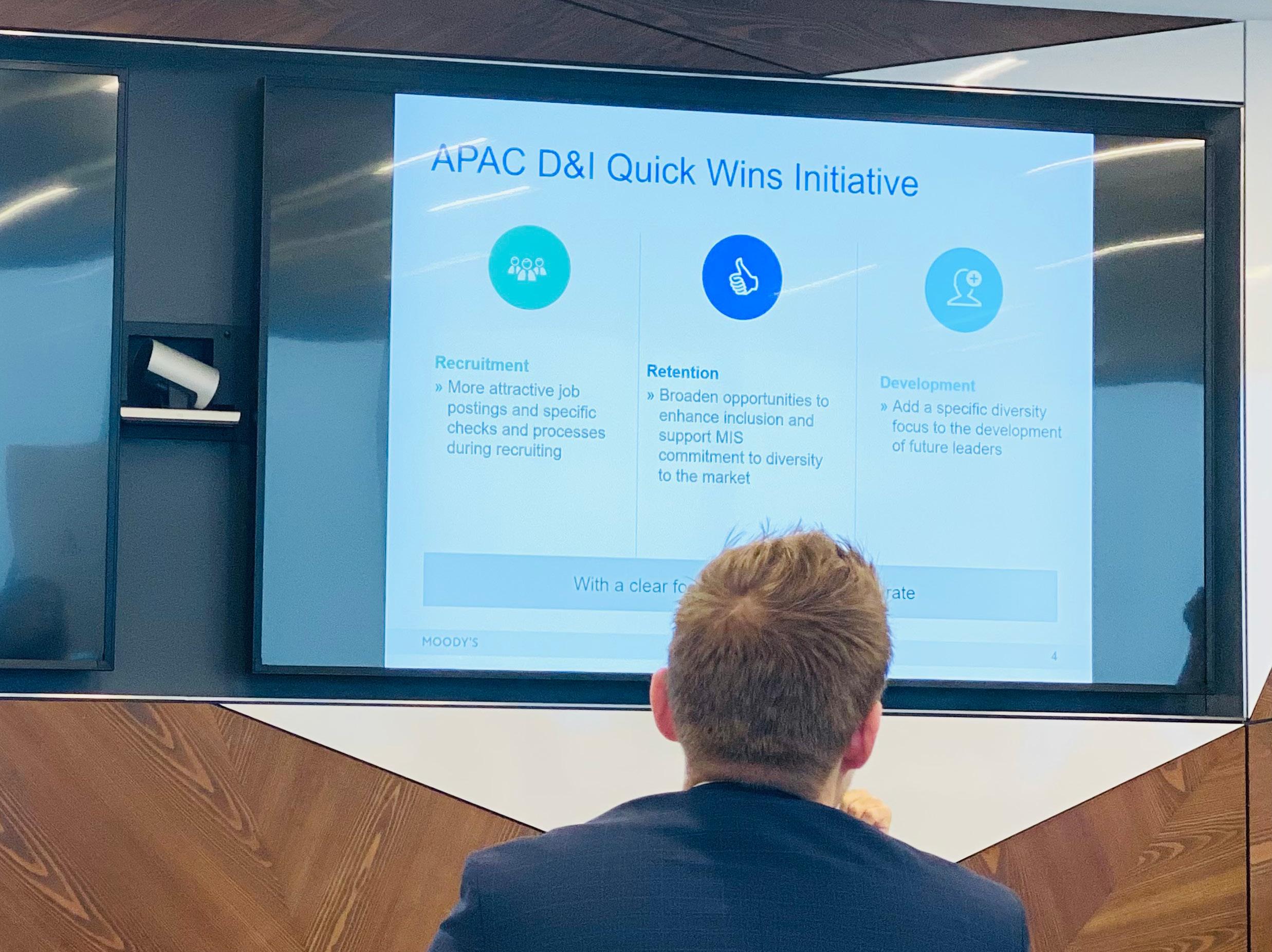
“EY and Moody’s have worked together to develop an Integration Factory that can quickly integrate acquisitions”
SCOTT BELTRAN SENIOR PARTNER AT EY AND GLOBAL COORDINATING SERVICES PARTNER AT MOODY'S, EY


“There is more to come, and we are very excited about the prospects ahead of us.”
Important as technology is, it's not everything – as Klebanoff reiterates: “You can’t scale intelligent automation and robotic process automation (RPA) without the people and the culture. One of the main areas of focus when we think about transformation is the people aspect. How do we ensure that the people are part of the transformation? Are they ready for and do they understand the change? Are they equipped with the skills to participate? We've embarked on a people journey, as well as a digital journey.
“We're busy upskilling, having realised we didn't have enough people who were strong in some of these new analytics and BI tools. We didn't have people who were really focused on the process. Some of them were unfamiliar with the SAP system we were putting in place – a lot of the traditional accounting that folks used to do changes when you automate, optimise and put in new systems. So, a very big emphasis has been placed on training; we created learning journeys aligned to the new roles required to support this enhanced finance organisation. When someone needs to develop a skill set, we give them the appropriate curriculum, as well as opportunities to put into practice – I believe this is essential to successful transformation.

“ We're trying to shift the emphasis and report in a way that enables people to be proactive, leveraging the numbers to predict what might happen – moving from hindsight to insight”
JEFFREY KLEBANOFF MANAGING DIRECTOR - FINANCE TRANSFORMATION, MOODY'S CORPORATION

INDUSTRY: FINANCIAL SERVICES
LOCATION: NEW YORK CITY
Jeff is a seasoned technology and business transformation leader of the Finance Transformation, Global Business Services & Analytics team. He manages a global team that oversees the implementation of new technology solutions across Moody’s, supports the enablement of end-to-end digital solutions and data-driven insight, enables the organisation through process improvement and is responsible for global Finance services that enhance the customer and employee experience. Recently, Jeff has also taken on a leadership role in supporting the People Evolution effort to transform Moody’s People Organization.
One other major area of focus for Jeff is the cultural aspects of the organisation. He has more than 75 mentees and is also an Executive Sponsor of the Moody’s Minds Business Resource Group, which is extremely focused on employee wellbeing. Jeff joined Moody’s in 2019 and prior to that, worked at OppenheimerFunds for over 5 years and PwC for almost 15 years.
INDUSTRY: FINANCIAL SERVICES
LOCATION: NEW YORK CITY
Paul is a finance technology leader with extensive experience leading global businesses through large scale business and technology transformations. He has led and managed large application portfolios at Moody’s, and is currently responsible for Program Delivery and Process Excellence
– a global function focused on business enablement. Paul joined Moody’s in 2011 and has held various leadership roles in the technology and finance sectors for the last 25 years.

“It's a large programme involving hundreds of people and millions of dollars, under Board scrutiny, and of course things sometimes do go wrong ”
INDUSTRY: FINANCIAL SERVICES
LOCATION: NEW YORK CITY
Mark Kaye is the Chief Financial Officer of Moody’s Corporation with responsibility and oversight for all global financial activities. He leads a team whose mission is to provide near real-time data-driven financial insight to support the execution of superior operational and strategic decisions. He is an actively involved diversity and inclusion leader and business partner, with a passion for creating a high-performance and transparent culture, developing talent and fostering employee growth.
Mark joined Moody’s in 2018 after more than 15 years of diverse experience in business finance, financial planning and analysis, strategy and large-scale project management.
TITLE: SENIOR PARTNER AT EY AND GLOBAL COORDINATING SERVICES PARTNER AT MOODY'S
INDUSTRY: FINANCIAL SERVICES
LOCATION: NEW YORK CITY
COMPANY: EY
Scott is Moody’s Global Coordinating Services Partner and is responsible for the oversight and delivery of all EY services to Moody’s globally. Scott is based out of the New York area and provides C-Level Consulting related to technology platform business models, digital strategy and service as a board advisor.
Scott has over 20 years of experience as a business and technology consultant and senior operating executive across the technology, media and entertainment industries.
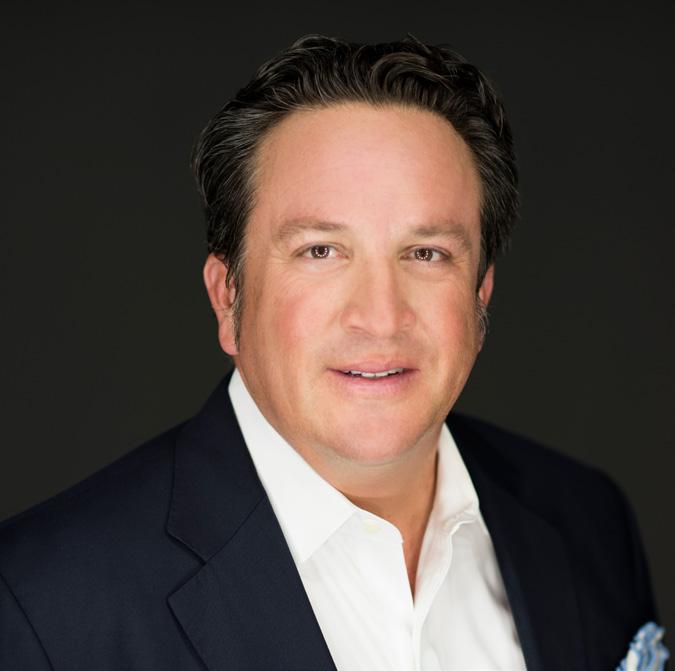
As a Senior Partner with EY, Scott provides his clients with forward-thinking, unique global perspectives coupled with proven expertise in aligning digital strategies with business objectives.

“In a transformation, it's easy to concentrate on new systems and processes, missing the importance of people. We have to hire people and engage with partners to help us. Where we find a gap in our capabilities, we can work with partners like EY to fill them until we can hire or train people with these skill sets.”
The people journey, Klebanoff emphasises, will never be entirely complete, continuing to evolve as new tools and processes come along and finance transformation proceeds.
That all-important Process Excellence team is overseen by Senior VP Paul Paretta, in addition to programme delivery across the business. With 11 years at Moody's, Paretta has a broad portfolio of responsibilities, overlooking all the projects and programmes across the finance organisation.
“My team has a key role in helping deliver and drive those projects. As part of that, we have a focus on mergers and acquisition integration, and there’s a core capability we have developed specifically for this.”
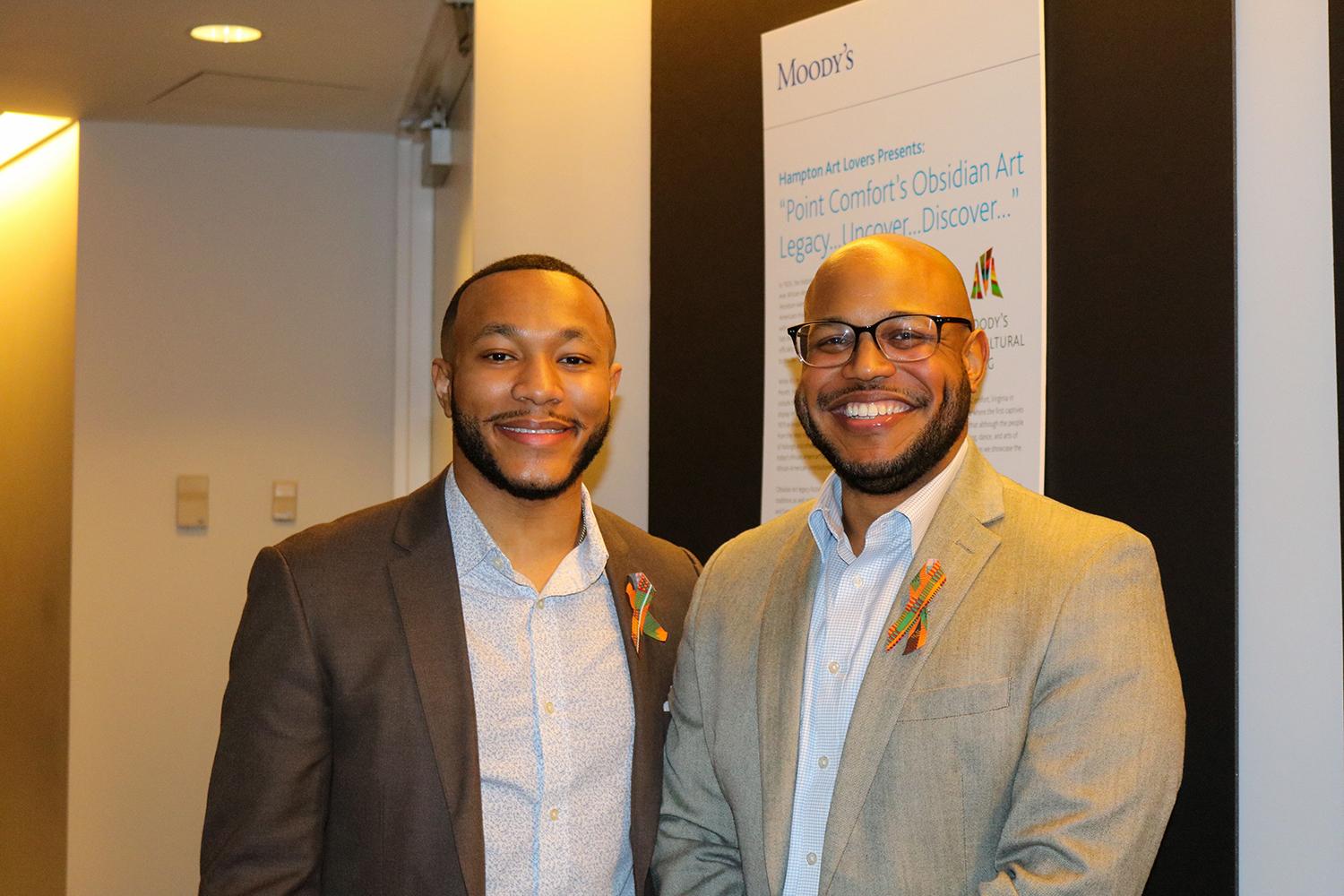
When it comes to onboarding and working with partners, the methodology varies depending whether the partner identified is a large system integrator (SI), such as EY, or a small, boutique-type business – though the principle remains consistent.
“Of course, we look for industry experience and for the competencies we need. That's a must-have for us: they need to have the track record to deliver; we want to partner with organisations that we can rely on to work with us through the ebbs and flows of a programme. Large-scale transformations are not easy and are often fraught with all sorts of risks and, in our industry, many fail.
“For us, it’s important to ensure that in the dark hours (those really tough times in delivering a programme), our partner will be there with us throughout the journey
Value drivers are going to be at the heart of all the work we're doing as a finance organisation ”
to help solve problems with us as part of the equation, in terms of the value-drivers of the programme. As we think about the organisations we've partnered with in the past and with whom we continue to partner, like EY, you will see this as a common theme.”
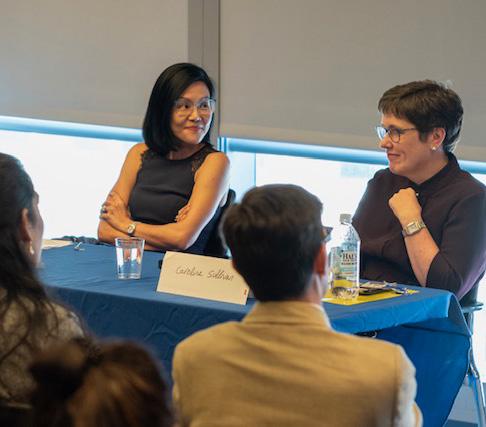
Scott Beltran, a Senior Partner at EY, explains how partnership helps to overcome the familiar headaches associated with M&A: “EY and Moody’s have worked together to develop an Integration Factory that can quickly integrate these acquisitions. The team is developed to be nimble, to expand and contract as needed while bringing together both institutional knowledge of
Moody’s and the process, communication, training, and technical skills needed at the right time, as efficiently as possible.
“We constantly measure success against predefined goals and objectives specific to each programme. As it relates to the Integration Factory, we leverage a standard project plan across four predefined phases to monitor execution. At the end of each phase, we conduct a review of project status and risks and develop mitigation strategies where needed.
“In addition, we conduct weekly operational checkpoints across our stakeholder groups to communicate status, upcoming activities
addressed. Success is measured through the successful execution of cutover and transition of users and processes to ‘business as usual’.”
However competent the team and its partners are, there will always be challenges along the way, as Paul Paretta is quick to admit. “We have an overarching, multi-year roadmap that helps us navigate the project portfolio across the finance organisation and serves as a way of communicating what work is committed and enables the right dialogue when prioritisation and trade-off discussions are needed.”

with the technology, we took a step back to assess how the finance organisation needed to change”
PAUL PARETTA SENIOR VICE PRESIDENT – PROGRAM DELIVERY & PROCESS EXCELLENCE, MOODY'S CORPORATION
As Jeff Klebanoff stresses, technology is not enough on its own; it has to be absorbed into the culture of the organisation to drive the finance transformation journey.

Paretta explains: “We launched this programme back in 2019 and before we even started with the technology, we took a step back to assess how the finance organisation needed to change to support the broader organisation’s strategic goals and objectives. We refer to this as the digitisation of finance and we started by looking at the operating model and structure of the finance organisation. Clearly,
technology is a significant component of this programme, it is the key enabler, but the people-perspective is at the heart of it all. Therefore, we ensured a key focus was on change management – we established a communications, training and engagement model that was thoughtful, intentional, timely and tailored to suit the varying needs of our stakeholders.”
Delivering significant change such as this has to be managed in a way that the organisation can effectively acclimate to new ways of working. As Paul Paretta describes: “We phased the programme into major releases. First, we rolled out enabling technologies within the SAP S/4HANA ecosystem; our global core footprint included a suite of capabilities in accounts payable, fixed assets, general ledger, consolidations and management reporting.”
“A key theme that cannot be emphasised enough is that these programmes are not easy to execute, and recognising when to adapt and pivot to changing circumstances has been a key success factor. We recognised the phasing strategy we initially set forth required even further decomposition. To that end, we introduced an additional phase that allowed us to de-risk and reduce the complexities of our next major release. In August 2021, we deployed customer billing, tax, accounts receivable, cash applications and revenue accounting to our Moody’s Analytics business. In 2023, we will kick-off deploying this same suite of capabilities to our Moody’s Investors Service business, which will benefit from the ‘global design’ we implemented during the second phase of the programme.”

The International Monetary Fund (IMF) has tempered expectations of growth, saying that advanced economies in Europe and North America could see just a 1.4% increase in economic output next year. It gives rise to the prospect of a recession in the near future.
The implications on lenders would be mixed: consumers turn away from mortgages during the bad times, but the rising cost of living may prompt some people to take out short-term loans to cover dayto-day expenses. Consumers will invariably tighten their belts, forcing lenders to become more creative and more adaptable around the loans they offer.
“There’s a general expectation that as economic growth slows, there will be a reduction in new lending and more of a focus on the quality of existing lending,” says Paul Randall, CEO of Creditinfo. “There will be added pressure on what people can afford to do – for example pay their mortgages –especially as household budgets are squeezed.”
In challenging times, ‘affordability is the name of the game’ “Affordability is the name of the game during an economic crisis,” Randall says. “If people can’t afford to repay their loans, lenders will inevitably tighten up their risk and reduce new lending. However, awarding loans should never be a blackand-white decision – not least because this underserves consumers and has a negative knock-on effect on the economy, as the flow of capital is consequently reduced.
“Other options, such as the flexibility to adapt repayments or offer a smaller loan instead of none at all, will ensure customers are served without over-burdening them.”
“There will be a need to support people who fall into financial difficulty,” concurs Neil Kadagathur, CEO and Co-Founder of fintech lender Creditspring. He suggests making sure that borrowing costs are clear upfront; taking a step back on late fees; and keeping on top of changes to consumers’ financial situations, particularly where it forces them to take out more than one short-term loan.
PROVIDERS SHOULD EMBRACE OPEN BANKING TECHNOLOGY TO ENABLE FASTER AND MORE ACCURATE CREDIT DECISIONS”
TASHA CHOUHAN TINK
WITH HOUSEHOLD BUDGETS UNDER PRESSURE AND MANY CONSUMERS NEEDING A SHORT-TERM CASH FIX, HOW CAN LENDERS RETAIN TRUST IN DIFFICULT CIRCUMSTANCES?

combines
“There will be a proportion of customers who inevitably run into trouble in terms of repaying loans, as economic growth slows and purse-strings tighten,” Creditinfo’s Paul Randall continues. “Meanwhile, lenders are going to want to do everything they can to decrease their risk profiles.”

Harder economic circumstances will make it imperative for lenders to make reliable credit decisions. With many
household budgets under growing pressure, ensuring that borrowers can repay their loans will become more important – and data has a huge role to play.
“Proper risk management is all about capturing as accurate a picture of a borrower as possible,” Randall explains. “The quality of the information used in this process is extremely important.
“During times of strong economic growth and minimal losses, lenders become more confident about awarding loans. As the economy slows down, the focus should be on performing rigorous checks and building airtight target borrower profiles in order to build holistic and objective overviews that will feed into decreasing potential risk.
“The other aspect lenders could focus on is continuous, clear communication. Neither borrowers or lenders wish to see customers fall behind with payments, so encouraging lenders to implement an open dialogue with borrowers to discuss their problems is very important, and removing barriers to this open communication is key. For example, banks need to try to make sure that, during times like this, stressed borrowers aren’t waiting for long periods of time to speak to someone.”
Tasha Chouhan, UK & IE Banking Lead at Tink, agrees: “Financial services providers should embrace the use of open banking technology to enable faster and more accurate credit decisions in real-time that work for everyone. Greater access to financial data allows lenders to make better decisions about affordability and creditworthiness, based on up-to-date income and spending information rather than credit scores or antiquated risk decisioning.”
“ THERE’S AN EXPECTATION THAT, AS ECONOMIC GROWTH SLOWS, THERE WILL BE A REDUCTION IN NEW LENDING AND A FOCUS ON THE QUALITY OF EXISTING LENDING”
PAUL RANDALL CREDITINFO
There’s an argument that short-term lenders – particularly buy-now-pay-later (BNPL) –have lost their halo post-Covid. Creditspring’s Neil Kadagathur argues that many BNPL customers didn’t understand the implications of falling behind on repayments, with nearly half of respondents in one survey unaware that they could be referred to a debt collector for missing a BNPL payment. It’s a worrying state of affairs. Recessions have a way of creating the unfortunate illusion that lenders are profiting off the desperation of hardpressed consumers.

“Traditionally, there has been widespread distrust of lenders and, unfortunately, this remains the case,” Kadagathur explains. “The lending industry has often been seen as focused on profits over customer wellbeing – over four in ten (43%) people believe lenders encourage them to take out more money than they can afford, and fewer than one in five (17%) see lenders as responsible businesses that care about their financial wellbeing.
“Over the next few months, lenders are likely to see increased applications from borrowers due to the cost-of-living crisis – and the focus from lenders should be ensuring that they offer proper support. Stringent affordability checks are vital to protect borrowers and ensure they aren’t overlending, which puts borrowers at increased risk of debt. For this, an integrated tech approach using open banking to review financial information with the borrower’s permission can ensure more accurate and quicker decisions around borrower affordability, streamlining the process but also providing more support to borrowers at a time when they need it most.”
Paul Randall continues: “During an economic downturn, the borrower profiles that lenders
TRADITIONALLY, THERE HAS BEEN WIDESPREAD DISTRUST OF LENDERS AND, UNFORTUNATELY, THIS REMAINS THE CASE”
“ AFFORDABILITY IS THE NAME OF THE GAME DURING AN ECONOMIC CRISIS”
“A trend we’ve seen before during economic downturns and recessions is larger financial institutions tightening their risk profiles and awarding fewer loans, while smaller financial organisations might try to prioritise the customer experience by not clamping down as hard but charging more for repayments in an attempt to mitigate the added risk.”
are targeting will narrow, so lenders need to do everything they can to collect as much relevant data as possible to keep their group of target customers as broad as possible.”

He warns that lenders must either become more cautious or pass the risk onto borrowers:
Whatever approach they choose, lenders must do something to show willing and play their part in any financial crisis, as Neil Kadagathur argues: “The industry needs to work more closely with external stakeholders… to boost financial education, lend more responsibly and improve transparency. All these steps will provide more support for borrowers at a time when many people’s finances are under pressure.”
PAUL RANDALL CREDITINFO
Neo and challenger banks are transforming the traditional banking industry from a stodgy, slow moving space to one that’s innovative, dynamic and forward-thinking.
But it's not just the processes that have improved – it's the services to customers, too. All-digital banks provide, in general, lowercost products that are delivered faster than those offered by their incumbent counterparts. So, we take a look at the top 10 digital banks operating today.
As neo and challenger banks disrupt traditional global incumbents, we rate the leaders of the pack
One of the newer market entrants, Australia-based Judo Bank is located in Melbourne and was founded in 2018 by Co-CEOs Joseph Healy and David Hornery.
Already serving over 10,000 customers, Judo Bank is also one of Australia’s most recent unicorn fintechs. It serves business customers as well as individuals, following the awarding of its banking licence in 2019.

Judo Bank raised US$216mn at a funding round in December 2020 – and was valued at $2.6bn in November 2021. This is a 100% increase on JudoBank’s 2019 valuation.
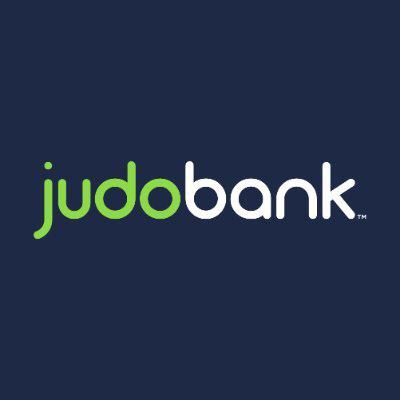
Headquartered in New York and founded in 2013 by technology experts and Wall Street bankers Dee Choubey, Chee Mun Foong, and Pratyush Tiwari, MoneyLion is a rising star in the banking world. Initially launched to provide financial services, investment and lending products, the fintech has since moved into the digital banking space, with scaling success swiftly following.
By 2021, MoneyLion partnered with Fusion Acquisition Corp and launched its IPO, revealing a combined equity valuation of $2.9bn.

With its most recent valuation placing it at US$1.6bn, London-based Monzo serves five million customers across the UK and US.
Founders Tom Blomfield, Jonas Huckestein, Jason Bates, Paul Rippon, and Gary Dolman launched the bank in 2015. By 2016, the digital banking app set a record when it raised over $1mn on Crowdcube.
Blomfield stepped down as CEO in May 2020. The current CEO, TS Anil, stepped in to hold both the UK and US titles until Carol Nelson joined the US leadership team in 2021.
Launched by banking veteran Anne Boden in January 2014, Starling Bank is a digital challenger based in London that specialises in current and business accounts.
In April 2022, Starling completed an internal fundraising round of US$152.5mn, with a pre-money valuation of over $2.9bn. Investors include Goldman Sachs, Fidelity, RPMI Railpen, Qatar Investment Authority and Harold McPike.
Starling Bank currently serves 2.7 million customers and saw revenue increase by 600% in its most recent set of financial accounts.

Germany’s biggest all-digital bank, N26, is headed up by young entrepreneur and banking whizz Valentin Stalf. He founded the bank in 2013 in Munich through the Rocket Internet accelerator programme and has since seen it grow from a small startup to one of the most impressive neobanks in Europe.
N26 left the UK marketplace citing Brexit as the cause – and is now focusing on Europe. N26’s direct competitors are Revolut and Monzo, and it has seven million customers across 24 countries.

San Francisco-based SoFi was founded in 2011 by celebrated CEO Anthony Noto.
SoFi, which stands for ‘Social Finance’, initially launched with a US$2mn loan programme that could connect newly graduated Stanford students with alumni. The four founders were Mike Cagney, James Finnigan, Ian Brady and Dan Macklin. By October 2020, SoFi acquired full-service national bank status and now has a valuation of $5.26bn. However, in early 2021, pre-IPO predictions suggested SoFi was worth almost double that at $9bn.


Founded in 2013 by dynamic CEO Chris Britt, Chime is headquartered in San Francisco and was valued at US$14.5bn following a $485mn funding round in Q3 of 2020.
Chime specialises in retail banking and serves an estimated 12 million customers, making it the most valuable retail-serving fintech startup in the US.

In a surprise move, Britt publicly launched Chime publicly in 2014 on the highly popular Dr Phil talk show. The host reportedly gifted his guests a Chime card, each loaded up with $5,000. The bank saw a 50% growth expansion during the pandemic as its large customer base became much more reliant on digital channels.
One of the longest established digital banks, Moscow-based Tinkoff was founded in 2006 by Oleg Tinkov – who then went on to launch the fintech by reportedly investing $70mn of his own money in the project.
It’s currently led by CEO Oliver Hughes and has 13 million customers. Data from its London Stock Exchange (LSE) listing places Tinkoff with a valuation of US$17bn. Indeed, despite the challenges of the past few months, Tinkoff’s total assets have been growing year-on-year since 2018. It recently reported total assets worth RUS1.318bn – a figure that is expanding by 50% a year.
Founded in 2015 by Russian-born financial whizz Nikolay Storonsky, Revolut has taken Europe’s banking industry by storm. Headquartered in London, with a recent valuation based on its latest funding round of US$33bn, Revolut also recently partnered with fintech heavyweight Stripe as part of its strategy to expand offerings and provide a wider range of products and services to the business world.

It hasn’t always been a smooth ride for the all-digital bank, though. In 2021, Revolut pulled out of Canada, citing difficulties in obtaining the licensing to operate as a full bank within Canada’s incumbent financial space. The move followed the successful launch of Revolut’s beta version in Canada some 18 months previously. However, the withdrawal is considered a temporary retreat as Revolut investigates and expands within other global marketplaces.
Storonsky said at the time: “We didn’t have enough resources to launch all the products in Canada, so, as a result, we paused it for a year until we had more resources. We just decided to limit the amount of countries we’re launching in at the moment.”


Launched in 2013 as a direct reaction to the underserving, over-charging incumbent banks of Brazil, Nubank was founded by David Vélez, Cristina Junqueira and Edward Wible, having since grown to become the most successful digital bank to date.

The trio of founders decided to brand their new digital banking entity as Nubank for two reasons: first, because it reflected their desire to create something entirely new; and, second, ‘nu’ in Portuguese translates as ‘nude’ – another concept they wanted to impart to reflect the pared-back nature of Nubank’s products and services.
With a predicted valuation of US$126bn by 2025 on its current growth trajectory, the challenger bank currently serves an estimated 45 million customers. Nubank’s NPS rating of +87 (Itaú’s is +14 and considered acceptable) is just one aspect that reflects its popularity among customers.
Nubank CEO: Latin American banking market set to expand 'significantly' in coming years

